|
Search Term: " soothing "
Borage Seed Oil: A Rich Source of GLA with Diverse Health Benefits
Date:
July 16, 2025 11:08 AM
Borage Seed Oil: A Rich Source of GLA with Diverse Health BenefitsBorage seed oil comes from the Borago officinalis plant. It is a nutritional powerhouse because of its high concentration of gamma-linolenic acid (GLA). This omega-6 fatty acid provides many health benefits. These include reducing inflammation, improving skin health, and potentially easing symptoms of hormonal imbalances and arthritis.The Power of GLA: An Anti-Inflammatory AgentThe cornerstone of borage seed oil's efficacy lies in its GLA content. Within the body, GLA is converted into dihomo-gamma-linolenic acid (DGLA), a precursor to anti-inflammatory compounds, most notably prostaglandin E1 (PGE1). This is significant because many chronic diseases are rooted in inflammation. By bolstering the body's production of these anti-inflammatory molecules, borage seed oil can help to counteract inflammatory processes.soothing Skin AilmentsOne of the most well-documented benefits of borage seed oil is its positive impact on skin health. It is particularly noted for its potential to alleviate symptoms of inflammatory skin conditions such as:
Relief for Rheumatoid ArthritisResearch suggests the anti-inflammatory GLA in borage seed oil can reduce joint tenderness, swelling, and morning stiffness associated with rheumatoid arthritis. Some studies suggest it may even reduce the need for conventional anti-inflammatory medications.Hormonal Harmony and PMS ReliefFor those who experience premenstrual syndrome (PMS), borage seed oil may offer a natural way to manage symptoms. It is thought that fluctuations in hormone levels can influence the body's fatty acid metabolism. The GLA in borage seed oil can help to produce PGE1, which may in turn help to alleviate common PMS complaints such as breast tenderness, mood swings, and bloating.Important Considerations and Potential Side EffectsWhile generally considered safe for most people, it is crucial to choose borage seed oil products that are certified "pyrrolizidine alkaloid (PA) free." PAs are naturally occurring toxins in the borage plant that can be harmful to the liver. Reputable manufacturers will remove these compounds during processing.Potential side effects of borage seed oil are typically mild and may include digestive issues such as bloating, gas, or indigestion. As with any supplement, it is advisable to consult with a healthcare professional before starting to take borage seed oil, especially for those who are pregnant, breastfeeding, or taking other medications, particularly blood thinners or anti-seizure drugs. In conclusion, Borage seed oil, rich in GLA, is a valuable natural supplement with many potential health benefits. Its ability to modulate cellular inflammation makes it a compelling option for supporting skin, managing arthritis, and easing hormonal discomfort. Here are even more concise versions:
(https://vitanetonline.com:443/forums/Index.cfm?CFApp=1&Message_ID=6621) Nighttime Tea – The perfect way to relax and unwind
Date:
November 03, 2022 05:30 PM
After a long day, sometimes it can be hard to just let go and relax. If you're finding it difficult to wind down before bed, we have the perfect solution – Nighttime Tea. night-time is a soothing, calming blend of botanicals that are known for their relaxing properties. So Dim the lights, grab a cup of Nighttime Tea, and let mother nature do her thing. Sweet dreams... How Nighttime Tea Works Nighttime Tea contains a blend of botanicals including chamomile, lavender, and passionflower. These herbs have been used for centuries to promote relaxation and sleep. Chamomile is especially effective in reducing anxiety and promoting sleep. A study in the Journal of Alternative and Complementary Medicine found that chamomile tea significantly improved sleep quality in participants who drank it for four weeks. Lavender is another herb with calming effects. Inhaling lavender oil has been shown to decrease blood pressure and heart rate, while a study in the journal Frontiers in Pharmacology found that lavender oil can improve sleep quality. Passionflower is also effective in reducing anxiety and promoting sleep. A study published in the Journal of Clinical Pharmacy and Therapeutics found that passionflower was as effective as oxazepam, a common anti-anxiety medication, in treating generalized anxiety disorder. If you're looking for a natural way to relax and improve your sleep quality, look no further than Nighttime Tea! This soothing tea contains a blend of herbs with calming effects that will help you wind down at the end of the day. So Dim the lights, grab a cup of Nighttime Tea, and let mother nature do her thing. Sweet dreams...
(https://vitanetonline.com:443/forums/Index.cfm?CFApp=1&Message_ID=6557) Is Your Skin in Need of Softening and Hydration?
Date:
November 01, 2022 05:36 PM
If you're like most people, your skin is your largest organ. And just like the rest of your organs, your skin needs to be taken care of in order to stay healthy. That's why NOW® Solutions 100% Pure Magnesium Chloride Flakes are the perfect bath additive for softening and hydrating your skin. How Magnesium Chloride Flakes Work Derived from the ancient Zechstein seabed in the Netherlands, NOW® Solutions 100% Pure Magnesium Chloride Flakes are some of the purest and most potent magnesium flakes on the market today. A single cup of flakes contains approximately 19 grams of elemental magnesium, which is absorbed through the skin and into the bloodstream to help improve skin hydration and overall health. So how exactly do magnesium chloride flakes work? When you add a cup of flakes to bath water, the magnesium is absorbed through your skin and into your bloodstream, where it travels to all parts of your body to help improve hydration. In addition, magnesium chloride flakes have anti-inflammatory properties that can help soothe dry, irritated skin. Why You Should Use Magnesium Chloride Flakes There are many reasons why you should use magnesium chloride flakes, but here are just a few:
If you're looking for an all-natural way to improve skin hydration and overall health, look no further than NOW® Solutions 100% Pure Magnesium Chloride Flakes. Derived from the ancient Zechstein seabed in the Netherlands, these potent magnesium flakes can be added to bath water or used in foot baths to help improve skin hydration and soothing dry, irritated skin. So why wait? Order a bag of NOW® Solutions 100% Pure Magnesium Chloride Flakes today!
(https://vitanetonline.com:443/forums/Index.cfm?CFApp=1&Message_ID=6552) The calming, centering benefits of NOW® Lavender - Tea Tree Oil
Date:
October 27, 2022 12:30 PM
For centuries, people have used lavender and tea tree oil to promote feelings of calm and well-being. These two popular essential oils come together in NOW® Lavender - Tea Tree Oil to create an aroma that's soothing, centering and uplifting. Lavender Oil Lavender has long been used for its calming, relaxing effects. The Lavandula officinalis spp. plant is native to the Mediterranean region and has a sweet, floral aroma. Research has shown that lavender can help reduce anxious feelings and promote restful sleep.* Tea Tree Oil Tea tree oil comes from the Melaleuca alternifolia plant, which is native to Australia. Tea tree oil has a fresh, minty scent and is known for its cleansing properties. In aromatherapy, tea tree oil is used to promote feelings of alertness and focus.* NOW® Lavender - Tea Tree Oil Blend NOW® Lavender - Tea Tree Oil pairs these two popular essential oils to create an aroma that's both soothing and uplifting. This blend can be diffused or applied topically to help you enjoy the calming benefits of lavender and the refreshing, cleansing properties of tea tree oil.* In Summary: NOW® Lavender - Tea Tree Oil is a unique blend of two popular essential oils that offers a variety of benefits. From its calming effects to its refreshing, cleansing properties, this oil can be diffused or applied topically to help you enjoy the benefits of both lavender and tea tree oil.*
(https://vitanetonline.com:443/forums/Index.cfm?CFApp=1&Message_ID=6540) Soothing relief for achy muscles and joints
Date:
October 26, 2022 12:33 PM
Feeling sore after a workout? You're not alone. Aching muscles and joints are common, especially if you're new to exercise or you've had a particularly intense session. Thankfully, there's a natural way to soothe your soreness and ease your discomfort. NOW® Solutions Joint & Muscle Cream is specially formulated to provide relief for the skin surrounding active joints and muscles. Keep reading to learn more about this product and how it can help you feel your best. How NOW® Solutions Joint & Muscle Cream Works This product contains glucosamine, a compound normally found in the articular cartilage of joints. Glucosamine is known for its ability to support healthy joint function and ease occasional discomfort associated with exercise or overexertion. The cream also includes boswellia, capsaicin, and natural methyl salicylate. These three active ingredients are combined for their skin care properties and for conditioning the areas around joints and muscles. Boswellia is an Indian herb that has been used for centuries to support healthy inflammation response. Capsaicin is derived from chili peppers and is known for its ability to temporarily relieve minor muscle pain. Methyl salicylate is a naturally occurring organic compound that gives wintergreen its characteristic fragrance and flavor. It's also used topically for its soothing properties. When applied to the skin, NOW® Solutions Joint & Muscle Cream penetrates deeply to deliver its moisture-attracting capabilities directly where you need it most. This product is fast-absorbing, non-greasy, and non-staining, making it ideal for use before or after exercise. It's also free of parabens, propylene glycol, synthetic fragrances, dyes, and phthalates. Plus, it's dermatologist tested and safe for all skin types. If you're looking for a natural way to relieve occasional muscle pain and discomfort, try NOW® Solutions Joint & Muscle Cream. This product contains glucosamine, boswellia, capsaicin, and natural methyl salicylate—all of which are known for their ability to soothe soreness and ease discomfort. The cream is fast-absorbing, non-greasy, and non-staining, making it easy to apply before or after exercise. It's also free of parabens, propylene glycol, synthetic fragrances, dyes, phthalates, making it a good choice for those with sensitive skin. Plus, it's dermatologist tested and safe for all skin types. Give NOW® Solutions Joint & Muscle Cream a try today!
(https://vitanetonline.com:443/forums/Index.cfm?CFApp=1&Message_ID=6530) Soothe Your Joints with Glucosamine, MSM & Arnica Liposomal Lotion
Date:
October 20, 2022 02:03 PM
If you're struggling with sore, aching joints, you're not alone. In fact, according to the CDC, 1 in 2 adults aged 18 and over have some form of joint pain. While there are various treatments available, many come with undesirable side effects. Fortunately, there's a new joint lotion on the market that's getting rave reviews from users—NOW Solutions Glucosamine, MSM & Arnica Liposomal Lotion. What is NOW Solutions Glucosamine, MSM & Arnica Liposomal Lotion? NOW Solutions Glucosamine, MSM & Arnica Liposomal Lotion is a soothing lotion specifically formulated for use on joint areas. This unique blend of ingredients combines glucosamine, a normal joint and cartilage component with MSM, a source of organic sulfur. Sulfur is an element known to be a normal component of connective tissue structures. Arnica is well known for its traditional uses. NOW Solutions uses liposome technology for enhanced absorption. Liposomes are very similar to the different layers of the skin barrier and compatible with cell membranes. Due to their mimicking ability, the liposome can more easily moisturize the skin’s natural barrier layers, and allow the ingredients to function more effectively. How Does NOW Solutions Glucosamine, MSM & Arnica Liposomal Lotion Work? When applied topically, NOW Solutions Glucosamine, MSM & Arnica Liposomal Lotion helps to temporarily relieve minor aches and pains associated with arthritis, simple backaches, muscle strains and sprains. The lotion also helps to increase circulation and reduce inflammation. Who Can Benefit from Using NOW Solutions Glucosamine, MSM & Arnica Liposomal Lotion? NOW Solutions Glucosamine, MSM & Arnica Liposomal Lotion is ideal for anyone who suffers from joint pain or inflammation. The lotion can be used as needed on sore joints or muscles and is safe for daily use. The non-greasy formula absorbs quickly and won't leave your skin feeling oily or sticky. It's also Paraben-free and has a refreshing menthol scent. If you're struggling with sore joints or inflamed muscles, give NOW Solutions Glucosamine, MSM & Arnica Liposomal Lotion a try. This unique lotion contains ingredients that are known to help reduce pain and inflammation while increasing circulation. The non-greasy formula absorbs quickly into the skin leaving you feeling refreshed and cool. It's also Paraben-free and has a refreshing menthol scent that makes it enjoyable to use. Give NOW Solutions Glucosamine >MSM & Arnica Liposomal Lotion a try today! You'll be glad you did!
(https://vitanetonline.com:443/forums/Index.cfm?CFApp=1&Message_ID=6510) How to Deal With Mild Ear Discomfort
Date:
October 11, 2022 03:29 PM
Do you ever have that feeling like there's something in your ear but you can't seem to get it out? Or maybe your ear feels itchy and uncomfortable but you're not quite sure why. If you're experience any mild discomfort or irritation of the tissues of the ear, don't worry—you're not alone. In fact, this is a pretty common problem. But what can you do about it? One option is to try using a natural blend of herbs like Now Foods soothing Ear Oil. This product is designed to cleanse and moisturize the delicate tissues of the ear canal, providing relief from itchiness and discomfort. Simply apply a few drops of the oil into your ear and massage gently for 30 seconds. Then, tilt your head to the side and let the oil drain out. Repeat as necessary until you're feeling better. Another option is to make a simple home remedy using ingredients that you probably already have in your kitchen. First, mix together 1/4 teaspoon each of baking soda, salt, and hydrogen peroxide. Then, use a dropper to apply 3-4 drops of the mixture into your affected ear. Keep your head tilted for 5 minutes so that the mixture has a chance to work its magic, then rinse with warm water and dry with a clean towel. If you're experiencing any mild discomfort or irritation in your ears, don't panic—there are a few things you can do to find relief. Try using an herbal oil like Now Foods soothing Ear Oil or mix up a simple home remedy using ingredients like baking soda, salt, and hydrogen peroxide. Whichever method you choose, hopefully you'll be feeling better in no time!
(https://vitanetonline.com:443/forums/Index.cfm?CFApp=1&Message_ID=6501) Chamomile Tea: A soothing cup of relaxation
Date:
October 04, 2022 03:07 PM
Chamomile Tea Benefits Chamomile tea is not just a pleasant drink - it has many benefits as well. Chamomile tea can help you relax, fall asleep more easily, and fight off anxiety and depression. Chamomile tea is also full of antioxidants, which can help boost your immune system and protect your cells from damage. Not to mention, it’s delicious! How to Make Chamomile Tea Making chamomile tea is very simple. All you need is water, a chamomile teabag or loose leaf chamomile, and a cup. Boil water and pour it over the teabag or loose leaf chamomile in your cup. Steep for 3-5 minutes, depending on how strong you like your tea. You can add honey or lemon if you like, though chamomile tea is delicious on its own. Sit back, relax, and enjoy! Chamomile tea is a delicious and soothing beverage with many benefits. If you’re looking for a way to relax and unwind, look no further than a cup of chamomile tea. Cheers!
(https://vitanetonline.com:443/forums/Index.cfm?CFApp=1&Message_ID=6482) Comforting Massage Oil is the Perfect Way to Unwind
Date:
October 03, 2022 04:42 PM
We all know how hectic and stressful life can be. That's why it's important to take some time for yourself every now and then to relax and rejuvenate. One of the best ways to do this is with a soothing massage. And what could make a massage even better? Using a luxurious, nourishing massage oil like Comforting Massage Oil from Naja Naturals! Comforting Massage Oil is an advanced blend of natural oils specifically formulated for relaxation and skin rejuvenation. Natural essential oils from lavender, chamomile and patchouli are combined with grape seed, apricot and almond oils to provide a full spectrum of emollient properties. The tranquil and calming essence of Comforting Massage Oil is the perfect complement to a therapeutic massage. It can also be used as a daily moisturizer to leave skin feeling silky soft, nourished and rejuvenated. How to Use Comforting Massage Oil There are endless ways to use Comforting Massage Oil. Here are just a few of our favorites:
Rub it into your cuticles and nails to keep them healthy and hydrated. If you're looking for a way to relax and rejuvenate, look no further than Comforting Massage Oil from Naja Naturals. Made with natural ingredients like lavender, chamomile, grape seed oil, and more, this luxurious oil is perfect for use in massages or as a daily moisturizer. Trust us, your mind and body will thank you!
(https://vitanetonline.com:443/forums/Index.cfm?CFApp=1&Message_ID=6481) Introducing another great product to the Now Foods Family: Balance Facial Oil
Date:
September 10, 2022 09:54 AM
We are so excited to introduce another Now Foods product: Balance Facial Oil. This perfectly blended facial oil leaves the complexion soft, smooth, and hydrated while diminishing the appearance of fine lines through a natural fusion of soothing skin care oils (featuring pure plant botanicals, essential oils, and fatty acids). Keep reading to learn more about this amazing new product! How Balance Facial Oil Works Balance Facial Oil is packed with nutrients that your skin needs to look its best. Shea Butter Ethyl Esters and Butyrospermum Parkii (Shea) Oil work together to deeply moisturize the skin while simultaneously reducing redness and inflammation. Simmondsia Chinensis (Jojoba) Seed Oil* hydrates and balances the skin, Argania Spinosa (Argan) Kernel Oil (tree nut)* protects against free radicals, and Vegetable Squalene keeps the skin looking plump and youthful. Rosa Damascena (Rose) Absolute, Calophyllum Inophyllum (Tamanu) Seed Oil (tree nut)*, Jasminum Grandiflorum (Jasmine) Oil, and Tocopherol (Vitamin E) (non-GMO soy) work together to create a radiant, healthy glow. Finally, Rosa Moschata/Rubiginosa (Rose Hip) Seed Oil* helps to diminish the appearance of fine lines and wrinkles. Why You Need Balance Facial Oil in Your Life If you are looking for a product that will deeply moisturize your skin without feeling heavy or greasy, then Balance Facial Oil is perfect for you! This light-yet-powerful facial oil is quickly absorbed by the skin, leaving you with a hydrated, balanced complexion. In addition to providing long-lasting moisture, Balance Facial Oil also diminishes the appearance of fine lines and wrinkles for a youthful look. In Summary: We are so excited to introduce our newest product: Balance Facial Oil. This perfectly blended facial oil leaves the complexion soft, smooth, and hydrated while diminishing the appearance of fine lines through a natural fusion of soothing skin care oils (featuring pure plant botanicals, essential oils, and fatty acids). If you are looking for a product that will deeply moisturize your skin without feeling heavy or greasy, then Balance Facial Oil is perfect for you! Order now and see the difference for yourself!
(https://vitanetonline.com:443/forums/Index.cfm?CFApp=1&Message_ID=6438) The Best Natural Over-the-Counter Sinus Remedies: Effective Solutions for Your Sinus Problems
Date:
April 30, 2022 11:04 AM
What are the most common symptoms of sinus problems? Sinus problems are very common, and the symptoms can vary depending on the severity of the issue. One of the most common symptoms is a feeling of congestion or fullness in the sinuses. This can be accompanied by pain and pressure in the forehead, cheeks, or around the eyes. Other common symptoms include a runny nose, cough, sore throat, and fatigue. In some cases,sinus problems can also lead to fever and difficulty breathing. If you are experiencing any of these symptoms, it is important to see a doctor so that you can get proper treatment. What are the causes of sinus problems? Sinus problems are a common and often frustrating issue, with a wide range of underlying causes. From environmental irritants like pollen and dust to infectious agents like bacteria and viruses, there are an almost limitless number of possible culprits behind sinus troubles. Additionally, certain foods, medications, or other habits can also affect the delicate balance of mucus in the sinuses. Ultimately, understanding the various factors that influence a person's susceptibility to sinus problems is the key to effectively managing these conditions. By identifying any triggers or risk factors one can minimize the impact of sinus issues on everyday life. What are the best natural over-the-counter sinus remedies available today? Sinusitis is a condition that affects the sinuses, the small, air-filled cavities located around the nose and eyes. It occurs when these cavities become inflamed, often due to a viral infection. Sinusitis can be extremely painful, causing congestion, headaches, and facial pain. While there are many over-the-counter medications available to treat sinusitis, some people prefer to use natural remedies. One popular natural remedy is steam inhalation. This involves inhaling steam from a pot of boiling water or from a humidifier. The steam can help to loosen mucus and reduce inflammation. Another popular option is saltwater irrigation, which involves using a neti pot or nasal sprayer to rinse the sinuses with warm saltwater. This can help to flush out irritants and ease congestion. Natural remedies are often safe and effective, making them a good option for treating sinusitis. Luckily, there are a number of effective natural over-the-counter remedies that can help to alleviate symptoms like congestion and inflammation. For example, nettle leaf is a popular herb with a long history of use in naturopathic medicine. Rich in minerals and anti-inflammatory compounds, it can help to clear out toxins from the sinuses while also soothing swelling and reducing pain. Other possible remedies include quercetin, an antioxidant found in many fruits and vegetables that has been shown to have antihistamine effects, and anti-histamine formulas containing herbs or plant oils that naturally regulate histamine levels. Ultimately, the best remedy for your individual sinus issues will depend on your specific symptoms and preferences. Nettle leaf to relieve sinus allergy symptoms. As we have said, allergies are a common problem, affecting millions of people worldwide. They can cause a range of symptoms, from mild sniffling and sneezing to severe congestion and difficulty breathing. Many people rely on over-the-counter medications to alleviate their allergy symptoms, but these drugs can have undesirable side effects. Fortunately, there are natural alternatives that can be just as effective in relieving allergy symptoms. One such remedy is nettle leaf. Nettle leaf has been used for centuries to treat a variety of ailments, including allergies. It works by inhibiting the release of histamine, which is one of the main compounds that triggers allergy symptoms. In addition, nettle leaf has anti-inflammatory properties that can help to reduce congestion and swelling. If you're looking for a natural way to relieve your allergy symptoms, nettle leaf may be worth trying. Quercetin and allergies Quercetin is a potent antioxidant that has been found to be effective in preventing and treating a variety of health conditions, including allergies. Many people are familiar with quercetin as an antihistamine, an effect that is due to its ability to inhibit the production of "histamines" in the body. Histamines are the chemicals responsible for triggering allergic reactions such as watery eyes, runny nose, itching, and sneezing. By blocking their production, quercetin can effectively reduce or even eliminate these symptoms. Furthermore, quercetin has also been found to strengthen lung function by reducing inflammation in the airways and protecting against oxidative damage. Overall, quercetin may be an ideal natural remedy for alleviating allergy symptoms. Cayenne and Allergies Cayenne is a popular spice that is prized for its pungent, spicy flavor. In addition to being used in cooking, however, cayenne has also been shown to be an effective remedy for certain allergies. Studies have found that the active ingredient in cayenne, capsaicin, can help to block inflammatory responses in the body and neutralize histamine, the chemical that triggers allergic reactions such as sneezing and watery eyes. As a result, regular consumption of cayenne may help to reduce allergic symptoms and improve overall quality of life for those affected by allergies. Whether through fresh peppers or cayenne powder or supplements, incorporating this powerful spice into your diet may be a great way to treat your seasonal allergies naturally. Is there a supplement that combines them all? Yes, Solaray Sinus Source? Yes, there is a supplement that combines all the key ingredients typically found in nature-based sinus cleansers and decongestants. This supplement is called Solaray Sinus Source, and it contains a combination of three active ingredients: nettle leaf, quercetin, and cayenne pepper. Each of these ingredients has been shown to provide natural relief from sinus problems, helping to reduce inflammation, congestion, and other unwanted symptoms. By combining these powerful botanicals into one convenient formula, Solaray Sinus Source provides a safe and effective way to support healthy sinuses. So if you're looking for a natural solution to your sinus woes, look no further than this powerful blend!
(https://vitanetonline.com:443/forums/Index.cfm?CFApp=1&Message_ID=6404) Need Digestive Relief?
Date:
April 28, 2021 11:36 AM
1. A synergistic combination of d-limonene and sea buckthorn for a soothing support of the entire digestive system.*
2. This combination of Ayurvedic herbs has been used in India for over 5,000 years to support digestive health and comfort.*
3. Clinically studied, standardized DGL for soothing GI support!*
4. Provides boswellia plus other soothing ingredients to support comfortable and predictable digestive function.*
5. Features FloraSure® probiotic blend, a unique combination of live, active cultures with a long history of human use. For complete Digestive Health!
(https://vitanetonline.com:443/forums/Index.cfm?CFApp=1&Message_ID=6377) 6 Health benefits to make you love manuka honey (if you don'talready)
Date:
May 06, 2019 03:44 PM
Manuka honey is touted as a super food due to its numerous therapeutic benefits. Manuka honey is a strong antibacterial that can strengthen your immune system during flu season and all year-round. Because of its antimicrobial properties, manuka honey is particularly effective in soothing sore throats. Manuka honey is also quite good for oral health and can be used to prevent gingivitis. When purchasing manuka honey, be sure there is a UMF rating on the packaging, which shows that it has been tested for purity. A high UMF rating correlates to strong antibacterial properties and a potent flavor. Key Takeaways:
"Manuka honey is a unique kind of honey from New Zealand. It comes from the manuka tree and has many therapeutic properties." Read more: https://www.naturalnews.com/2019-04-07-health-benefits-to-make-you-love-manuka-honey.html
(https://vitanetonline.com:443/forums/Index.cfm?CFApp=1&Message_ID=6268) Holy basil works to reduce stress and defeat cancer
Date:
April 29, 2019 02:46 PM
With illnesses increasing and information regarding how to battle them growing in recent years, many have turned to holistic forms of medicine as a means of battling otherwise destabilizing diseases. One of these diseases that has been targeted for cure with non-traditional medicine has been that of cancer, which recent findings suggest that holy basil may be a potential aid in the fight against the disease, while also helping to reduce stress and other factors in an individual. Key Takeaways:
"Chronic stress damages the nervous system, suppresses the immune system, and can even cause increased appetite and weight gain. When it comes to relieving effects of stress, holy basil just might be the “gold standard” of soothing herbs." Read more: https://www.naturalhealth365.com/holy-basil-reduce-stress-2661.html
(https://vitanetonline.com:443/forums/Index.cfm?CFApp=1&Message_ID=6211) 5 Foods To Help You Fight Insomnia
Date:
April 25, 2019 04:48 PM
Insomnia, which is a chronic lack of sleep, achieved because the insomniac can't seem to enter a state of sleeping, or because the sufferer can't sustain the state once achieved, is a debilitating problem for many. While there exist pharmaceutical interventions for insomnia, there are also more natural ways to combat the problem, specifically food choices that may help. Tryptophan is the hormone that releases the relaxing chemical serotinin, that helps sleep arrive. Hummus has natural tryptophan. Kiwi has specific phtyochemicals and antioxidants that also promote sleep. Healthy carbs tend to make us sleep, which is why corn is a good sleep-promoter. Milk is another healthy carrier of tryptophan. Chewing on basil might help too as it eases mental woes and soothes troubled digestion. Key Takeaways:
"The sugar level in candies is capable of upsetting your blood sugar levels which leads to the interruption of your sleep. You might sleep well immediately after eating them but after some time, you will wake up irritable. Corn is a healthy carb you should incorporate in your diet." Read more: https://www.longevitylive.com/live-healthier/5-foods-fight-insomnia/
(https://vitanetonline.com:443/forums/Index.cfm?CFApp=1&Message_ID=6185) Honey is medicine: 4 Scientifically proven perks to using Nature'ssweetener
Date:
March 29, 2019 08:40 AM
Hey, honey. It should be included in your diet. Sure, it's delicious when used as a sweetner, but it's benefits are just as sweet as this concoction. There are many proven benefits offered to people who enjoy the all-natural sweetener we know as honey. Four of the benefits of using honey include cough and sore throat suppression, healing of scrapes and wounds, supports a healthy immune system, and aids in heart health. Yes, honey is important part of your iet. Key Takeaways:
"This potent superfood has a long history of being used as a natural remedy due to its health-boosting properties." Read more: https://www.naturalnews.com/2019-01-26-honey-medicine-4-scientifically-proven-perks-to-using-natures-sweetener.html
(https://vitanetonline.com:443/forums/Index.cfm?CFApp=1&Message_ID=6103) Why your skin needs apple cider vinegar
Date:
January 12, 2019 08:38 AM
Apple cider vinegar has many known health benefits including lowering cholesterol and helping with weight loss. However, there are also benefits from using it for your skin instead of just ingesting it. Apple cider vinegar can fight skin infections, help reduce body odor and fight dandruff. If you have a sensitive area due to a sunburn or mosquito bite, apple cider vinegar can also provide soothing relief. This will speed up the healing process as you will not be tempted to itch the affected areas. Key Takeaways:
"The uses and benefits of ACV don’t end there: it’s also very popular in the world of beauty." Read more: https://www.standardmedia.co.ke/lifestyle/article/2001304805/why-your-skin-needs-apple-cider-vinegar
(https://vitanetonline.com:443/forums/Index.cfm?CFApp=1&Message_ID=5958) Relieve muscle spasms naturally with the pomegranate
Date:
October 12, 2018 07:52 AM
Research shows that pomegranate can reduce muscle spasms which also allows it to be treated for spasm related conditions including diarrhea. The rind of a pomegranate has chemicals which relieve muscle spasms, but research is still being done as to a safe dosage of this chemical. Other home remedies that can reduce muscle spasms include water, electrolytes, tea, massages and rest. If the situation is more severe, you should go visit a health professional immediately. Key Takeaways:
"Past research has confirmed the spasmolytic properties – the ability to reduce or cease spasms – of pomegranate rind, but the exact mechanism was not made clear." Read more: https://www.naturalnews.com/2018-09-28-relieve-muscle-spasms-naturally-with-the-pomegranate.html
(https://vitanetonline.com:443/forums/Index.cfm?CFApp=1&Message_ID=5786) Common Herbs to Help Soothe Constipation
Date:
September 21, 2018 08:52 AM
About a fifth of Americans suffer from the discomfort of constipation, but luckily there are several natural remedies for this common nuisance. Constipation happens when either food moves too slowly through your system, or the colon sucks too much of the water content out of waste as it passes through. Slippery elm can both soothe and lubricate the digestive tract. Aloe can likewise both help constipation and help soothe other digestive problems. Fenugreek is both an effective constipation remedy and a tasty spice. Key Takeaways:
"If you have trouble going to the restroom regularly, don’t worry because this can be easily remedied by knowing what’s making you constipated and implementing a few herbs in your diet that are specifically used to help relieve constipation." Read more: https://www.zliving.com/featured/herbs-to-help-constipation-116076/
(https://vitanetonline.com:443/forums/Index.cfm?CFApp=1&Message_ID=5770) The Gut-Soothing, Brain-Boosting Power of Mint Leaves
Date:
September 10, 2018 02:52 PM
Did you know that mint leaves are a strong source of good nutrition? They contain minerals, vitamins, and numerous other health benefits.They also consistently rank high among the best healing spices and herbs.Additionally, mint leaves can increase your brain function, assist your body in its digestive system, and help your body maintain a healthy balance of hormone levels. Let us not forget that they are also well known for leaving your breath fresh and pleasant as well. Key Takeaways:
"In reality, though, the potent little mint herb offers an impressive array of important vitamins, minerals and health benefits that make it a true powerhouse of nutrition." Read more: https://draxe.com/mint-leaves/
(https://vitanetonline.com:443/forums/Index.cfm?CFApp=1&Message_ID=5755) Eat This Herb To Improve Your Mood and Memory, Regulate Blood Pressure, Boost Immunity and More!
Date:
April 04, 2018 01:17 PM
Basil is a very common herb used around the world as a flavoring, from Italian cuisine to Thai cuisine, it is ubiquitous. This herb may have a link to improving mood and memory, as well as other health benefits. The key is its flavonoids. These chemicals are known for their antiseptic, detoxifying and other properties, such as soothing. This calming herb is just as perfect on a margarita pizza as it is to help alleviate your cough. https://www.youtube.com/watch?v=m0oVnKkmBvo&rel=0
(https://vitanetonline.com:443/forums/Index.cfm?CFApp=1&Message_ID=5571) Eat These 3 Oils In The Morning To Drop Weight Fast
Date:
January 09, 2018 03:59 PM
Three oils in your daily routine can help you lose weight and vitalize your day. These three oils are essential to a healthy body. The first oil is peppermint oil. This oil will prevent muscle spasm during a workout. Adding this to your morning or afternoon tea helps with inflammation and oxygenates the blood. This helps clear brain fog. Lemon oil boots the immune system. Coconut oil is the most versatile. You can brush your teeth with it, cook with it, or use it as a hand lotion. The benefits are enormous for these three oils. Key Takeaways:
"Instead of reaching for something that could ruin your hard work and progress, consider using oils in your morning routine to help you drop weight fast." Read more: https://www.thealternativedaily.com/eat-these-3-oils-in-the-morning-to-drop-weight-fast/
(https://vitanetonline.com:443/forums/Index.cfm?CFApp=1&Message_ID=5486) How to Get Rid of Stretch Marks Fast and Naturally - It Works!
Date:
October 10, 2017 12:14 PM
Many mothers have stretch marks. You can get them from regular weight gain as well but they're very common during pregnancy. Some get them worse than others and want to be rid of them. This gives good advice on doing so with little effort. It will help you feel better about yourself if you are one who hates to see any imperfections on your skin. It is easy to do and won't take much time either. https://www.youtube.com/watch?v=Abm9FzWxhtM&rel=0Key Takeaways:
"Widely used for several skin issues, aloe vera is very effective. By soothing and moisturizing the skin, it helps remove stretch marks."
(https://vitanetonline.com:443/forums/Index.cfm?CFApp=1&Message_ID=5325) These 6 Essential Oils Work Like Valium For Your Anxiety
Date:
August 29, 2017 04:14 PM
There are 6 essential oils that work like Valium for your anxiety. Bergamot is one of these essential oils that people can use. Bergamot is a very sweet fruit and it is a part of the citrus family. It makes for a very good and calming oil. It has soothing and moos boosting properties. There have been studies done on this that have shown its healing properties. Orange is another essential oil that will work great for healing anxiety. Key Takeaways:
"Geranium essential oil has been found to have both calming and refreshing properties, and it may especially help to soothe anxiety in women during those especially trying times in our monthly cycles." Read more: http://www.thealternativedaily.com/essential-oils-that-work-like-valium-for-anxiety/
(https://vitanetonline.com:443/forums/Index.cfm?CFApp=1&Message_ID=5194) 6 Unexpected Health Benefits of Activated Charcoal
Date:
August 16, 2017 04:14 PM
While most are not aware of the health benefits found in activated charcoal, adherents of the ancient Indian medicinal system of Ayurveda understand the true value of this underrated ingredient. Activated charcoal is excellent at soothing the stomach, as it aids digestive health and can alleviate symptoms of bloating. Activated charcoal also provides benefits to the skin as well. Thanks to its powerful cleansing properties, it can clear up even the most stubborn of breakouts. Adherents of Ayurveda also swear by activated charcoal’s superior teeth whitening potential compared to that of traditional fluoride toothpaste. This versatile ingredient also helps to lower cholesterol, can cure a hangover, and act as a natural filter for your water. Key Takeaways:
"In other words, activated charcoal can help draw out toxins from your food, water, and body." Read more: https://www.brit.co/unexpected-health-benefits-of-activated-charcoal/
(https://vitanetonline.com:443/forums/Index.cfm?CFApp=1&Message_ID=5132) Here's what dandelion roots can do for you: Digestion, blood flow, eyesight and more
Date:
June 30, 2017 12:14 PM
With its basis in traditional Chinese and Arabic medicine, the dandelion root can provide more health benefits than one might imagine. From liver detoxification and gallbladder health to getting rid of eczema and decreasing inflammation, this powerful root can really do a body good. The best way to ingest to root is through tea, which you can find at your local grocery store or even in your own back yard. If you prefer the home grown approach, you can pick the dandelions from your yard, boil them, and have tea ready to drink within 40 minutes. Key Takeaways:
"Taraxacerin, a bitter compound found in dandelion roots, is known to increase bile production." Read more: http://www.naturalnews.com/2017-06-26-dandelion-root-is-a-great-natural-remedy-to-treat-these-8-symptoms.html
(https://vitanetonline.com:443/forums/Index.cfm?CFApp=1&Message_ID=4909) 7 Healing Reasons To Take An Oatmeal Bath
Date:
May 13, 2017 11:44 AM
You may have never taken an oatmeal bath before now but if not you should at least consider it. They are great for you. They can have a positive affect on the body. This explains seven ways in which they can help. You may be afraid they feel unpleasant but that isn't the case either. Many people do this and don't complain about the feeling at all. People swear by oatmeal baths for their ailments. Key Takeaways:
"Since ancient times, healers have recommended oats for more than just relieving sustenance and constipation. Oats have been long-recognized as a healing treatment for a number of skin conditions." Read more: http://www.thealternativedaily.com/reasons-to-take-an-oatmeal-bath/
(https://vitanetonline.com:443/forums/Index.cfm?CFApp=1&Message_ID=4605) How To Remove Pimples Overnight | ACNE TREATMENT!
Date:
April 09, 2017 04:44 AM
So many people suffer with acne. Not only does it cause issues with appearance and self-esteem, it can cause other problems for those suffering, even affecting them socially. Tons of products are sold to treat acne, but many are too expensive and the rest just do not work. Is there any hope, or is acne around to stay? Have no fear because there's a new pimple removal technique here, and using it gets rid of your acne overnight. https://www.youtube.com/watch?v=T8a0iYXqYHA&rel=0Key Takeaways:
"The appearance of a new, hot, red, and prominent pimple on the face can always spoil our mood."
(https://vitanetonline.com:443/forums/Index.cfm?CFApp=1&Message_ID=4380) Adaptogens: Why you need these super herbs in your diet
Date:
March 18, 2017 01:44 PM
Herbs are healthy for different reasons. Many have vitamins and minerals in them which are essential to human health. Herbs have helped people treat illness for millennia. This talks about a certain type of herb called an adaptogen. These aren't mentioned often. Many people have never even heard of them. Key Takeaways:
"Adaptogens are Eastern medicine's answer to alleviating stress and boosting wellbeing and could just be the soul soothing, simple antidote we all need." Reference:
(https://vitanetonline.com:443/forums/Index.cfm?CFApp=1&Message_ID=4206) Medical News Today: Can honey and cinnamon help treat acne?
Date:
February 20, 2017 04:59 PM
Instead of using harsh chemicals on your skin to treat acne, you can make a soothing, deep cleaning natural face mask using cinnamon and honey. Honey, an ingredient used in medicine for centuries has several antibacterial properties. Cinnamon has antibacterial and astringent properties. When formulated together into a 30 minute mask, cinnamon and honey provide an effective and safe way to treat acne. Medical News Today: Can honey and cinnamon help treat acne?
(https://vitanetonline.com:443/forums/Index.cfm?CFApp=1&Message_ID=3985) How To Make Warm Cayenne Pepper Tea To Reduce Inflammation
Date:
November 22, 2016 04:59 PM
Cayenne pepper has taken the front seat in health news recently. The list of health benefits for this natural remedy is extensive and includes things such as helping with inflammation, digestive issues, and migraines. It is believed that the capsaicin in cayenne pepper is responsible for its wonderful effects, and some experts recommend drinking a cup of cayenne pepper tea every day. It’s a simple recipe of boiled water, cayenne pepper, and lemon. Key Takeaways:
"The benefits of cayenne are surprisingly wide-ranging. What’s more, cayenne pepper is one of the few natural remedies to actually receive substantial scientific research." Reference:
(https://vitanetonline.com:443/forums/Index.cfm?CFApp=1&Message_ID=3490) Ginger root: a homemade remedy for stomach pain and nausea
Date:
November 17, 2016 05:41 PM
A fragrant homemade remedy for an upset stomach is ginger. There are several properties that make ginger root a stomach pain soother. Researches have shown that ginger root has proved effective in getting rid of nausea while pregnancy. It is more effective than any anti inflammatory drug. Ginger root can alleviate the pain and discomfort in your abdomen in many ways. One gram of ginger taken in the form of tea, ale, salad, juice or soup is as efficacious as the anti-nausea drug, dimenhydrinate because it has lesser side effects. Ginger root is a better cure for nausea than vitamin B6. Ginger has reduced nausea due to chemotherapy in many cases. The healing spice, ginger has anti-inflammatory properties which helps it in increasing the digestive juices, neutralizing the stomach, thus soothing the stomach pain. Ginger helps in the secretion of some digestive juices and enzymes that neutralize the stomach. The root of ginger contains two chemicals: gingerols and shogaols. These are antioxidants that reduce the free radical production, thus protecting the body from them. When we use ginger root to treat stomach pain, these two chemicals soothe the intestinal tract, in order to prevent motion sickness and relieve the person from vomiting, stomach cramps, diarrhea and nausea. As the intestinal tract gets relaxed, the person is instantly relieved of pain. It causes elimination of any extra gas from the intestinal tract. Ginger root help in the quick flow of food in the stomach through the digestive tract by facilitating better absorption of nutrients. It aids in the production of bile, saliva and other gastric juices for better digestion and prevention of gas. The muscles are relaxed because of the phenols present in ginger root, that act like a sedative. Any over activity of stomach is prevented. The stomach cramps are prevented because ginger reduces the food from backing up in the digestive system. These phenols also help in quick movement of food and toxins in intestine and digestive system. Besides, ginger root helps in improving blood circulation and decreasing inflammation.
(https://vitanetonline.com:443/forums/Index.cfm?CFApp=1&Message_ID=3462) Reaping the Powerful Health Benefits of the Chaga Mushroom
Date:
October 04, 2016 05:02 PM
Varying types of mushrooms have been used for their healing and health promoting properties in the history of medicine but none have gained more popular use for treating a variety of ailments than the Chaga mushroom. Chaga mushrooms been used for soothing pains associated with a host of diseases including diabetes and neuropathy but have also seen notable use in normalizing cholesterol and blood pressure levels, also supports gastrointestinal health, and antiviral properties.
Chaga is considered an adaptogenic Fungus. Adaptogenic plants have a specific impact on the endocrine system, the cardiovascular system, the nervous system, the immune system, and the GI tract. Being an adaptogen means Chaga mushrooms can help the body cope with stress. Chaga is a great fungus to support many of our bodies systems. Consider adding it to your daily supplement regimen.
References:
//www.globalhealingcenter.com/natural-health/chaga-mushroom-the-immune-boosting-superfood/
//www.motherearthnews.com/natural-health/chaga-mushroom-can-help-you-to-be-healthy-zbcz1501
(https://vitanetonline.com:443/forums/Index.cfm?CFApp=1&Message_ID=3322) Sooth Diverticulitis Marshmallow Root
Date:
September 27, 2016 05:11 PM
Diverticulosis occurs when pouches form along the wall of the gastrointestinal wall, especially in the colon. Diverticulitis refers to the inflammation or infection of the pouches. The cause of diverticulosis is not yet clear, but medical experts suggest that it may result from the lack of sufficient fiber in the body. Due to insufficient fiber, the colon has to strain to push its contents forward, the pressure from the strain results in weak spots in the colon wall. The bacterial growth in the weak spots is thought to be the cause of the inflammation and infection.
Management of Diverticulitis with Marshmallow Root
Marshmallow root is obtained from Althaea Officinalis. It has both demulcent and emollient effects. The herbal remedy works by gelling and soothing the inflammation experienced in the colon wall.
Marshmallow root also has several other health benefits including:
References
//www.diverticulitisinfo.com/blog/?p=638
//www.webmd.com/digestive-disorders/tc/diverticulitis-topic-overview
//umm.edu/health/medical/altmed/condition/diverticular-disease
(https://vitanetonline.com:443/forums/Index.cfm?CFApp=1&Message_ID=3315) Chamomile: What You May Not Know!
Date:
September 16, 2016 09:52 AM
Chamomile is an excellent tea that everybody should have at their disposal when you need to relax and calm down from a busy stressful work day. The Tea is great tasting and easy to make.
(https://vitanetonline.com:443/forums/Index.cfm?CFApp=1&Message_ID=3293) Health Benefits of Aloe Vera
Date:
September 03, 2016 10:45 PM
Aloe vera has many different healing benefits, but is primarily known for the effects it has on the skin.
These all help to cleanse a wound, relieve pain and inflammation and ultimately heal the wound. It has been used on the skin for sunburns, cuts, eczema, poison ivy, insect bites, acne, chicken pox, hives, radiation and other burns. An aloe vera plant can actual heal itself. It has a growth stimulator, which helps to regenerate new tissue. If you cut part of the leaf from the plant, it doesn't take long before you will see a thin barrier forming, thus healing itself. The anti inflammatory properties of A.V. have been used to help with arthritis and joint related problems, inflamed muscles, inflamed intestinal and bowel disorders such as IBS, ulcers, Crohn's disease, hemorrhoids, colitis and more. Aloe vera has a soothing and alkalizing effect on the inside of the body helping people with over acidity, heartburn, ulcers, intestinal and digestive disorders as previously mentioned. It has also been know to increase protein absorption, regulate blood sugar levels, support the immune system and even help with low energy and chronic fatigue. What is stopping you from taking aloe daily?
(https://vitanetonline.com:443/forums/Index.cfm?CFApp=1&Message_ID=3264) Boswellia - The Anti-Inflammatory Herb
Date:
July 23, 2015 03:07 AM
Boswellia is some times referred to as Indian frankincense or boswellin. It comes from a tree known as boswellia serrata that is found to grow in the dry areas of India. Boswellia is said to have 55% of Boswellic acid. For centuries, many Indian healers have always taken the advantage of the anti-inflammation property of this tree. The bark's gummy resin contains anti-inflammation content in higher percentages - its known as salai guggal. In the modern world, preparations are done from a purified extract of the resin and normally packed in cream or pills which are then used mainly to reduce inflammation; rheumatoid or osteoarthritis arthritis. Unlike nonsteroidal anti-inflammatory drugs, like ibuprofen, which is one of the accepted treatments for joint inflammation, - boswellia according to research does not show signs of stomach irritation. It's also sometimes effective when it comes to back pains and other chronic related intestinal disorders. Its health benefits, according to research by scientists, has been outlined that this herb has specific and very active anti-inflammation ingredients. These ingredients are commonly known as boswellic acids. In the field of animal studies, boswellic acids have been proven to reduce inflammation. They improve rapidly the blood flow to the joints. They also do block those chemical reactions that always sets the stage for inflammation that cause chronic intestinal disorders. Boswellia maybe taken internally or even applied topically to the affected joints to help relieve inflammation that is associated with joint disorders. These always increase joint mobility and lessen the morning stiffness. In a study that was conducted involving 175 patients suffering rheumatic disorders such as rheumatoid arthritis, exactly 122 participants were found to experience reduced inflammation and stiffness after using boswellia for two to four weeks. Boswellia's inflammatory component helps reduce stiffness and aching, especially when associated with the low back pains. Though a lot of researches done shows that boswellia is effective when taken orally, creams also appear to be soothing all together. Boswellia also seems to reduce the inflammation related with Crohn's and ulcerative colitis disease, of which both are painful intestinal disorders. It's said to be able to accomplish this without actually the risk of gut irritation which is mainly associated with lots of convectional pain relievers. In the ?year 1997, a study was conducted involving ulcerative colitis victims, 82% those who took this boswellia extract like 3 times in a day, they experienced total and complete remission of this disease.
(https://vitanetonline.com:443/forums/Index.cfm?CFApp=1&Message_ID=3180) BENEFITS OF RASPBERRY LEAVES TO WOMEN.
Date:
July 09, 2014 02:46 PM
Benefits of raspberry leaves to women
Source
(https://vitanetonline.com:443/forums/Index.cfm?CFApp=1&Message_ID=3145) EGCG in green tea
Date:
May 10, 2014 07:38 AM
Green tea benefits
Using human umbilical vein endothelial cells, it was demonstrated that green tea extracts reduced expression of vascular endothelial growth factor (VEGF) receptors forms-like tyrosine kinase and fetal liver kinase. Kinase insert domain containing receptor. Because of the antiangiogenic property of its extracts, they have therapeutic potential in preventing the development of new microvascular networks (angiogenesis) needed for tumor growth. It was also found that green- tea polyphenols inhibited angiogenesis by reducing vascularization of chicken chorioallantoic membrane (CAM) by an angiogenin-like protein isolated from goat serum. EGCG effectively inhibited bladder-tumor implantation growth in rats, pointing to its potential as an intravesical chemotherapeutic agent. Inhibition of platelet function is a factor in reducing the risk of coronary artery disease. EGCG was reported to inhibit platelet aggregation, by possibly involving inhibition of cytoplasmic calcium increase. EGCG was proven to be the most effective in reducing thrombin-induced aggregation of washed human platelets. The ability of green- tea catechins to inhibit adenovirus infection and adenain, the human adenovirus 2 endopeptidase, was reported. EGCG proved the most potent inhibitor of four green-tea catechins tested. The viral protease adenain appeared to be the target of EGCG, so it is possible that all adenoviruses are sensitive to its action. The Chinese have known about medicinal qualities of green tea since ancient times, treating everything from headaches to depression. The three "Es"
Provides support for a healthy weight loss program, gives the energy needed to maintain an active lifestyle, health, and longevity. The appetite suppressor, Vanadium, reduces calorie intake. Thermogenesis, or fat metabolism, is increased, because of the EGCG/caffeine combination, therefore burning fat. EGCG fights free radicals. Fatty acids and lipids in the brain are susceptible to the effects of free radical perodixation. Much of the aging of the brain is attributed to perodixation. The EGCG helps to keep us young, alert, and able. Researchers have found that EGCG has inhibited tumor growth in both skin and gastrointestinal tracts. EGCG may fermented be able to obliterate cancer cells, without harming neighboring tissues.
(https://vitanetonline.com:443/forums/Index.cfm?CFApp=1&Message_ID=3117) Can Aloe Sooth The Skin When Damaged?
Date:
March 13, 2014 04:25 PM
What is aloe vera
Aloe is rich in antioxidants compounds such as vitamin A and calcium which have been proved to have a soothing effects. They help to eliminate free radicals in the body which are known to cause rashes and growths on the skin. Upon it use, you will feel calm and relaxed. Benefits of aloe vera Aloe gel is effective in healing damaged skin especially skin prone too acnes, rashes and blisters. It has anti-bacterial properties which permanently heals damages skin. Aloe provides instant relief from itching, sunburn, rashes as well as blisters. Apart from healing damaged skin. Aloe will moisturise skin and give you a natural look. It is rich in fatty acids that increases sebum production which makes skin to remain hydrated. Aloe is non-staining and is easily absorbed. It does not stick on your skin, nobody will know if you have applied aloe after 10 minutes. It is also effective in removing skin tags and dark spot. Though there are methods to remove skin tags and dark spot, aloe is one of the safest way to remove. It does not cause irritation and permanently removes skin tags and black spots. Aloe also increases oxygen supply to the skin. This is very important since it enhances growth of skin tissues and also tightens it. This is very important because it reduces saggy skins which are not pleasing. Aloe extract will also reduce redness and swelling, reduce inflammation and speed up wound healing. Thus, aloe is not only effective in soothing skin when damaged, it has multiple benefits to the user. Source
(https://vitanetonline.com:443/forums/Index.cfm?CFApp=1&Message_ID=3060) Can Clay Masks Help Rejuvenate The Skin?
Date:
March 09, 2014 10:39 PM
Using clay mask
How it works Clays and mud come in different qualities and types, buy one thing all types share in common is the ability to absorb toxins that are found in the human skin; purifying the skin in the process. The mode of operation of the clay masks is a very natural process whereby the clay works very deep into the patient’s skin, open the fine capillaries, break up the microcrystals which are responsible for hindering blood flow, and finally allows all toxins and wastes in the body to be flushed. Some clay masks can be used for every kind of detoxification exercises, including very serious ones. However, certain clay types are known to be more suitable for some particular skin types. The red clay is good for normal skin, green clay works for all skin types, it absorbs oils from the skin and help remove toxins, pink clay is mostly used for dry and sensitive skin, while white clay is specifically most used for sensitive skins. Source
(https://vitanetonline.com:443/forums/Index.cfm?CFApp=1&Message_ID=3054) Health Benefits and Side effects of Grape Seed Oil.
Date:
March 08, 2014 09:09 AM
Grape seed history
Some of its health benefit includes. It has is rich in antioxidants compounds, these compounds are very important because they help to eliminate free radicals in the body. Grape seed oil improves heart functions, it is rich in HDL cholesterol which prevents heart diseases. This oil lowers the LDL cholesterol which is a major cause of heart diseases. It is very beneficial to people suffering diabetes, it contains linoleic acid which is unsaturated fatty acid which is effective in alleviating diabetes. It is beneficial to blood vessels especially capillaries. Grape seed oil strengthens and repairs damaged blood vessel. This helps to alleviate conditions such as, spider veins, varicose veins and hemorrhoids. It is also very beneficial to people suffering arthritis. Grape seed oil has anti-inflammatory properties which have soothing effects, they provide relief against swelling and pain caused by arthritis. Grape seed oil is also very important to the skin, it alleviate skin acnes and blisters. Grape seed oil is also rich in omega 3 fatty acids which have multiple benefits. Omega 3 increases concentration power, mind power and also general body health. Kids who have used grape seed oil have recorded increased concentration and improved performance in academics. Grape seed oil moisturizes skin and boost skin tone. It has astringent properties which help to tighten and to tone skin. This makes users to be attractive, this boost self-confidence. Although grape seed oil has various benefit to the body, it has some side effects. Some of the seed effects includes; People who are allergic to grapes are not fit to use grape seed oil. Those under ant-coagulate are still not fit to use this product. User may suffer increase blood pressure, dizziness, headache, indigestion and nausea. Source
(https://vitanetonline.com:443/forums/Index.cfm?CFApp=1&Message_ID=3053) Vitamin D Cream Review.
Date:
March 04, 2014 08:23 AM
Vitamin D
Vitamin D-3 Cream offers a comprehensive moisture revitalization through a balanced ratio of beneficial nutrients. Research show that a gram of vitamin D-3 cream can make a great turn around on your skin as well as on your health. There are many health benefits of vitamin D creams, some of the benefits are; It rejuvenates your skin, it helps you look young. It contains antioxidant properties that eliminates free radicals in the body and gently help you to renew your skin. Creams containing vitamin D are effective in reducing redness, itching, and patches of scaly skin. Vitamin D-3 cream is effective in preventing, managing and reducing scaly skin, patches as well as skin redness. They also help to improve body immune system, users are not likely to suffer common diseases. Vitamin D creams also encourages cell differentiation, applying vitamin D cream will not only make your skin shiny and appealing, it goes further to encourage cell differentiation, thus user will ever look young and rejuvenated. Vitamin D creams are also effective in alleviating and protecting users against fatal diseases such as diabetes. Users are not likely to suffer from diabetes, those with diabetes, they can alleviate it by using vitamin D cream. They are also effective in moisturizing body, they have a very effective scent. It is lovely and has soothing effects, you feel less itchy and calmer upon using it. It can be used by people with acne prone skin, it will also help in alleviating skin acnes. Shortcomings. Some people with reactive skins allege to suffer blister upon it use. Sources
(https://vitanetonline.com:443/forums/Index.cfm?CFApp=1&Message_ID=3044) Health Benefits of Lemon oil.
Date:
February 20, 2014 04:58 PM
Health Benefits of lemon oil
1. Treatment of stomach ailments. It is very effective in treatment of various stomach problems such as constipation, acidity, indigestion and stomach upsets among other ailments. 2. soothing effects. It is very effective in treating insomnia. It enhances good and comfortable sleep. 3. Refreshing effects. Lemon oil has a calm effect and it is a remedy to mental fatigue, dizziness, nervous tension and anxiety. 4. It creates a positive mindset and eradicates negative emotions. Use of lemon oil increases alertness and concentration and is recommended for students and workers to enhance their performance. 5. Boosts immune system. It is rich in vitamins that boost immune system. User are very resistant to common ailments. It stimulates synthesis of white blood cells which guards body against diseases. It also improves blood circulation. 6. Weight loss. Lemon oil is popularly used for weight loss, it suppresses appetite and thus users will lose weight in a very healthy manner. 7. Hair care. Lemon oil is very effective in eliminating dandruffs, strengthen hair follicles and also ensures even distribution of hair. In addition, it use make hair to be strong, healthy and shiny. 8. Skin care. For those with skin acnes, this is the best product to use. Lemon oil is very effective in rejuvenating skin and makes users appear young. It is effective in pimples treatments and other skin disorders. 9. Asthma treatment. Lemon oil is a natural way to treat asthma, by inhaling it aroma, it clears air passages and sinuses, thus it clear air passage. 10. Antiseptic properties. It is used to hasten wound healing. 11. It is also used to ease pain especially by people with toothache. When massaged on the gums, it can stop gum bleeding and bad breath. Source
(https://vitanetonline.com:443/forums/Index.cfm?CFApp=1&Message_ID=3027) What Health Benefits Juniper Berry Oil Posses
Date:
February 19, 2014 03:18 PM
What is juniper berry
Organically talking, the juniper berry isn't a real tree grown foods yet the juniper's seed cone. It's viewed as a berry as a result of its scales. The juniper is an evergreen tree and there are obviously 6 types of this tree whose berries are palatable and utilized for a ton of useful purposes. Juniper berries oil are widely utilized within European cooking, particularly meat based arrangements as it gives one of a kind quality. Gin significant others likewise may be amazed to discover that juniper berries are the essential element in gin. However the juniper berry is eminent for its notoriety as a home grown answer for an unimaginably long rundown of conditions and afflictions. How it makes a difference The juniper is truth be told a helpful tree as a large portion of its parts are utilized for a medicinal readiness or the other. In this way, the berries, leaves, bark and even oil determined from the berries and wood are utilized within different ways. Benefits of juniper berry Basically a severe berry, the juniper berry holds various unpredictable oils or key oils, strand, vitamin C, flavoring and entire parcel of dynamic fixings that makes it the achievement healer that it is. Note that juniper berries might be taken as teas and the squashed berries could be connected on the skin also for an assortment of sicknesses. Here is a glance at a portion of the employments of the juniper berry and how it can help us lead healthier lives: Juniper is recognized to be a herb with the most astounding consequences for kidneys. It is additionally used to cure different urinary tract contaminations and it can uproot uric harsh corrosive from the figure. Juniper makes the kidneys work rapidly and the form transforms more pee, making it a great diuretic additionally. People confronting water maintenance issues can feel a great deal of alleviation with the juniper berry and its oil due to its diuretic lands. Oil from the juniper berry has a disinfectant impact and it comes as an extraordinary easing to individuals experiencing urethritis and cystitis. Suffering from digestive issues? The Berry may very well be your reply as it can help diminish tooting and colic and help processing. It additionally moves issues, for example, bloating, belching and acid reflux. As a digestive help, it is remarkable as it expands the longing, soothes gas and expansions the generation of gastric harsh corrosive. Juniper berry oil additionally has calming qualities and it is of superb assistance to those experiencing joint inflammation, gout and different conditions, for example, ailment. These joint related ailments happen due to the liquid maintenance around these joints and the juniper berry with its diuretic activity assuages this weight extensively. Skin afflictions, for example, dandruff, skin inflammation and contender's foot can additionally be treated with topical provision of the juniper berry. Juniper helps in invigorating the muscle tone and discernibly decreasing the impacts of ageing for generally individuals. Menstrual spasms are frequently a significant number of the most troublesome parts of a lady's life; however these can additionally be lessened fundamentally with the assistance of the juniper berry. Numerous cultivators even utilize the juniper to enhance the uterus tone and to help the individuals who have moderate or late beginning periods. Concentrated oils of the juniper are utilized topically for lung clogging and hack while it is additionally pivotal in helping those experiencing respiratory contaminations. The unpredictable oils help in clearing up bronchial entries and disposing of bodily fluid. It has a high convergence of insulin and aides in mending the pancreas. Essential oils extricated from juniper berries can help in soothing toothache and making gums stronger. It can additionally be utilized to oversee hair fall. Finally, the juniper berry is utilized by numerous to thin down and since it even scrubs the poisons from the form, it is an extraordinary general purifier also. Safety measures Juniper does have some noteworthy symptoms and its vital that you're attentive to them before you begin utilizing them as any type of medicine. Avoid the juniper berry oil in the event that you have extreme kidney issues as it can disturb the issue and cause further harm. If you utilize more than the endorsed sum, chances are that you could experience the ill effects of loose bowels, kidney torment, high circulatory strain, quick pulse and purplish pee. When taken inside, it can affect the assimilation of iron and different minerals. Open wounds are best not treated with juniper on the grounds that it can cause inconvenience and swelling. Juniper causes uterine fits and could prompt brought down ripeness, so ladies who are endeavoring to get pregnant must escape juniper. Pregnant ladies ought not to utilize juniper as it can cause uterine compressions and reason a premature birth. Diabetics must be cautious while utilizing juniper as it can raise the levels of glucose in the form. Juniper when taken in prudent sums and with individuals, who don't have the shown issues as said above, could be a blessing as it furnishes them with a considerable measure of help.
(https://vitanetonline.com:443/forums/Index.cfm?CFApp=1&Message_ID=3025) What Is Germanium Oil Good For?
Date:
February 18, 2014 06:37 AM
What is germanium
Some of it health benefits include Tonic properties It enables the entire body system to work well by affecting endocrine system, thus it regulates secretion of various enzymes, hormones, bile and acids. This ensures glands producing different substances do not under or over produce them. This is very important in ensuring better digestion, respiration, blood circulation and excretory systems works optimally. Vermifuge This property is very important for children who suffer from internal worms and also some adults. Germanium oil can help to eradicate internal worms such as ring worms. Deodorant Germanium oil has uplifting and a pleasant aroma. It is not harsh to the skin and it effects last for a long time. It also helps in eliminating body odor due to it antibacterial properties One of the advantage of using geranium oil as a deodorant is that it circulate in the body such that all your body parts will produce a sweet aroma, unlike other deodorants which are effective only at the point of application, germanium oil will be circulated throughout the body and exist during perspiration the time when body has an odor smell. Vulnerary properties It speeds up the healing process of surgical incision, cuts and wounds. This can be attributed to its various properties such as antibacterial properties, anti-microbial properties and styptic properties among others. Antibacterial and Antimicrobial Geranium essential oil prevent microbes and bacteria from developing on wound and also keeps body safe from other infections. Cicatrizing property Geranium essential oil is very effective in fighting acnes and stretch marks. It also helps in improving and maintaining skin tone, thus it will improve you appearance and consequently self-esteem. Source
(https://vitanetonline.com:443/forums/Index.cfm?CFApp=1&Message_ID=3023) What Are The Health Benefits Of Clove Oil?
Date:
February 16, 2014 02:15 AM
What is cloves
Historically it has been used for dental pain. Because the cloves are imparted by the chemical eugenolcloves are used in Indian ayurvedic medicine, chinese medicine, and western herbalism. Types of oil's: bud oil, leaf oil, ttem oil in Australia, after major flooding in Queensland, clove oil was mix in the water to use as a spray to kill mold, due it hasan anti septic effect. Ear ache: a mixture of warm clove oil and sesame oil is a good cure for ear aches. Respiratory problems: clove oil has a cooling and anti inflammatory effect. Headache: clove oil, when mixed with salt and applied on the forehead, gives a cooling effect and helps in getting relief. Infections: because it has a anti inflammatory effect.clove oil: can also helps for insect bites and stings. Indigestion: clove oil has traditionally been effective for the treatment of stomach problems, like: flatulence, hiccups, indigestion, motion sickness.nausea: clove oil helps for reducing nausea and vomiting its often used for pregnancy-related morning problem and discomfort. using it occasionally in aromatherapy will bring good effect. its't believed that clove oil is useful for cholera sick person's, and it will make your skin lock younger, it also help's for scar's, insect repellent: a few drops of clove oil at your bed, will keep bugs away soap, because to its strong aroma, soothing effect and anti-bacterial effect, clove oil is often used when making soap and can often be found as an active ingredient risks. One should be careful using clove oil, due it's very strong.
(https://vitanetonline.com:443/forums/Index.cfm?CFApp=1&Message_ID=3019) Bergamot Oil: Uses and Health Benefits
Date:
February 13, 2014 05:55 AM
What is bergamot
This oil has a long history of use as a food flavoring and perfume fragrance, but it also has several other less commonly known uses due to its therapeutic properties. The oil has been utilized as an analgesic, a stimulant, antidepressant, antiseptic, antibiotic, disinfectant, and as a circulatory and digestive aid. By stimulating the production of hormones, bergamot oil deadens the nerves to pain. It is very effective for headaches, muscle pain and other pain ailments. Use of the oil can lower the need for over-the-counter (OTC) medications, therefore reducing a person's chance of liver damage or gastric upset caused by many OTC pain relievers. The oil also known to lower the body temperature, making it an excellent anti-febrile agent. Produce both soothing and stimulating effects in the body, bergamot oil has been used as an anti-depressant and a metabolic stimulant. Components of the oil calm the nerves by increasing blood flow thereby creating pleasant feelings. By inducing secretion of certain hormones, bergamot oil helps the body to maintain a proper metabolic rate. It is also used in aromatherapy, specifically to calm anxiety during radiation treatments. A natural antibacterial and anti-fungal agent, bergamot oil has long been used in the treatment of infections, including certain skin conditions such as acne and mycosis fungoides, a fungal infection that causes tumors on the skin. It has also been used to treat unitary tract, colon, respiratory and kidney infections as well as vaginal yeast infections cause by Candida albicans. Its antibiotic and disinfectant properties make this oil a perfect antiseptic for treating wounds, rashes and other topical conditions which could result in a nasty infection. Using the oil will assist in the secretion of digestive enzymes and acid, therefore aiding in digestion and reducing gastrointestinal problems such as constipation, gas and bloating By inhibiting the enzyme, HMG-CoA reductase, bergamot oil helps reduce the amount of "bad" cholesterol, LDL in the body and also dilates the blood vessels which assists in lowering blood pressure.
(https://vitanetonline.com:443/forums/Index.cfm?CFApp=1&Message_ID=3015) Omega Oils-What Are They For?
Date:
January 02, 2014 09:22 PM
What is all the hype about with these omega fatty acids?
What is the difference between Omega 3's-6's-8's-9's? Omega 3 is an essential fatty acid that is not produced by the body naturally. They're obtained from food sources, such as fatty fish, and flax-seed oil. They contain a number of health benefits for the body, such as reduced inflammation throughout the body, and have benefits for the heart. Studies have shown the reduced inflammation has a huge impact on heart health, and is highly recommended to incorporate into your daily diet. Omega 6: is also an essential fatty acid that is not produced naturally by the body. These omega oils obtained from different types of vegetable oils, and through dietary supplements. Many claims made about Omega-6 fatty acids, however the only substantial proof is for heart health. They lower bad cholesterol levels, while raising healthy cholesterol levels. While essential, they are not to be overused, or they start being unhelpful by adding too much fat to the diet. Omega 7's: are monounsaturated fatty acids, palmitoleic acid and vaccenic acid. Palmitoleic acids are commonly found in fat tissue of the human body, and in the liver. Animal oils, macadamia nut oil, vegetable oils, and marine oils are good sources of omega 7's. They're considered a beneficial fatty acid by increasing insulin sensitivity by lowering inflammation. They also aid in the destruction in of insulin beta cells in the pancreas. This action has been proven to reduce insulin levels, which have claims that omega 7's are helpful in weight loss. Other uses include support of healthy skin, and soothing the gastrointestinal tract. Omega 9: fatty acids are not considered essential fatty acids since they're produced by the body. They're obtained from olive oil, and other monounsaturated fats. They contain the same heart healthy benefits as omega 3's and 6's helping lower cholesterol, our body makes them as needed. Omega oils are important for our overall health, especially heart health. Omega 7s are important to control insulin levels, and may aid with weight loss. Supplementing omega 3, 6, and 7 can lead to better cholesterol levels, and healthier skin.
(https://vitanetonline.com:443/forums/Index.cfm?CFApp=1&Message_ID=2947) How chamomile works to relax you and help you sleep better
Date:
October 24, 2013 09:33 AM
What is chamomile
References:
(https://vitanetonline.com:443/forums/Index.cfm?CFApp=1&Message_ID=2855) What is Monk Fruit And Why Is It Healthy?
Date:
July 24, 2013 10:24 AM
Monk fruit also known as luo han guo is a green melon cultivated in central Asia. It has been cultivated for many years by the Buddhist monks. The fruit contains an intensely sweet compound known as mogroside. It is a healthy, natural alternative to sugars and artificial sweeteners. The fruit is extracted in order to get mogroside which is many times sweeter than sugar. Monk fruit is crushed, combined with water, filtered and spray-dried to produce a sweet-zero-calorie powder known as fruit-sweetness. This sugar is used in several foods and beverages. Health benefits Ancient Chinese and Buddhist used monk fruit as treatment for various ailments, such as constipation, sunstroke and coughing. Modern research shows that mogroside can be used to treat diabetes since it contains a low glycemic index and can stimulate insulin secretion. In china, monk fruit was also used for many years to treat obesity and diabetes. The fruit contains antioxidants with anti- inflammatory benefits. British Journal of Nutrition reported that use of monk fruit by animals showed a reduction in lipid peroxidation or cell damage as well as urinary albumin levels. This shows that it protects kidneys from diabetic damage. Monk fruit strengthens the immune system, digestive tract, respiratory system as well as glands. This fruit is capable of eliminating and defending people against various health-related issues. The fruit reduces cholesterol, triglycerides and improve liver function. Furthermore, it increases good cholesterol while protecting the liver. It prevents cholesterol oxidization (due to its antioxidant potential) this results to reduced risk of heart diseases and strokes. Monk fruit extract has an antihistamine effect. The extract tends to counter an allergic response by soothing the mast cells that produces chemicals such as histamine. This chemical is related to both allergies and asthma. It is considered one of the best non-sugar sweeteners. It is combined with supplements used to promote and maintain a healthy weight.
Reference
(https://vitanetonline.com:443/forums/Index.cfm?CFApp=1&Message_ID=2849) Why Is George's Aloe Vera By Warren Labs Better Than Other Brands?
Date:
January 10, 2013 12:50 PM
Since time immemorial, the succulent Aloe Vera plant has been an eminent medicinal plant with a worldwide recognition. The soothing effect, rejuvenating irritated membranes, moisturizing the skin and easing constipation have been some of the undisputed health benefits that makes Aloe Vera gel a worthy supplement and cosmetic product's constituent. Recent research also shows that Aloe Vera extracts have a notable efficacy in lowering blood glucose and blood lipid levels. Studies however depict that the varied Aloe Vera species differ in some biochemical constituents and composition which makes some species better than others for a specific use. Georges Aloe Vera produced by Warren Labs specifically selects the species that are best suited for a given use. For instance, their George's Always Active Aloe Vera drink is made from Aloe barbadensis species which has been noted to be the most beneficial in rejuvenating mucal membranes that lines the GIT, effectively eases and prevents constipation without any irritation and also lowers blood lipid levels. Unlike other manufacturing processes employed by other Aloe supplement producers, George's Aloe Vera employs fractional distillation method to obtain the most beneficial constituents and gives Georges Aloe Vera drink the characteristic clear and thin feel. This process is primarily intended to get rid of the Aloe Vera's aloins and anthroquinones which irritate the GIT manifested by cramping and diarrhea. The distillation process also makes the drink easy to preserve since most of the Aloe Vera's constituents which may necessitate special storage or addition of additives are discarded off. This yields a pleasantly tasting drink with no additives or preservatives added. For optimal health benefits of this supplement, the manufacturer recommends a consistent daily intake of 2 ounces twice a day, and thus a gallon pack is always enough to use for a month. However, even though most of the Aloe Vera's constituents which produce considerable drug interaction implications are distilled off, consulting your doctor before using the supplement while under medication is always worthwhile.
(https://vitanetonline.com:443/forums/Index.cfm?CFApp=1&Message_ID=2808) Health Benefits Of Chamomile
Date:
December 03, 2012 07:56 AM
It is believed that ancient Egypt saw Chamomile as an effective cure for most illnesses. In the modern world too, this golden herb retains its healing properties and is used for treating many a disease and discomforts of the body. Most commonly, German chamomile blossoms are infused to prepare 'Chamomile tea' which is a fragrant concoction full of medicinal properties. The tea can be combined with honey to enhance the taste. Health Benefits Of Chamomile Tea Chamomile tea, supposedly, helps to bring about restful sleep. It is thus of great value for people suffering from insomnia and other sleep-related disorders. Due to its soothing and relaxing effects, it is generally taken before a person goes to bed. Since time immemorial, Chamomile has been considered a remedy for stomach ailments. Known to soothe gastric and bowel related problems, the herb is a blessing for people with stomach aches. All in all, Chamomile helps facilitate the complete digestion process by promoting bowel movement. For women facing menstrual cramps and nausea every month, Chamomile tea comes as a welcome relief. Research indicates that regular consumption of Chamomile tea increases the level of glycine in the body. Glycine is a compound that controls muscular spasms, thus it tends to calm menstrual cramps. A healthy cup of golden chamomile tea has also been found to combat the morning sickness of pregnancy. However nothing has been proven till now to this effect. Some studies suggest that this wonder herb accelerates the wound healing process too. Many researchers are of the belief that age-old Egyptians and Greeks used Chamomile flowers on wounds to speed up their healing time. Though there is no established evidence as such regarding this subject, history stands witness to the magical healing properties of Chamomile in more ways than one. Diabetes patients are also in for some good news concerning Chamomile tea. Many ongoing studies and surveys conducted worldwide are hinting at Chamomile playing a role in diabetes management. Consumed regularly in the form of tea, the herb may arrest complications arising out of diabetes and may also prevent hyperglycemia. What's more, the golden herbal tea prepared from chamomile is caffeine-free and will not be addictive in any way. However, it is always a good idea to take professional advice before going all-out for Chamomile. Some people may display allergic reactions to the herb and suffer side-effects. Therefore, it is best to try the herb first in small amounts before one decides to include chamomile tea in the daily routine of life. Besides its therapeutic uses, chamomile is being increasingly used as an ingredient in cosmetic products and is being considered a good friend of the skin. Since Chamomile is known to be a stress-buster, a cup of chamomile tea after a hectic work day might just prove to be the right beverage to save the evening. With its sedative, anti-inflammatory and anti-bacterial properties and benefits, Chamomile is sure to become more popular by the day. Used wisely, the golden herb is no less than gold itself.
(https://vitanetonline.com:443/forums/Index.cfm?CFApp=1&Message_ID=2743) Detox your Body with Aloe Vera Juice
Date:
August 08, 2012 08:23 AM
Introduction Aloe Vera is popularly known as Miracle plant, a natural healer and is easily available in most gardens. This cactus type plant is native to North Africa. This short stemmed juicy plant grows around 80 cm tall. But, why is this plant so popular in recent times? The sap which comes out of its leaves when cut has numerous medicinal properties. This herbal plants medicinal benefit has been acknowledged hundreds of years ago. Aloe Vera is available commercially in the form of supplements, capsules, juice etc in various stores across the world. Why is it so special? Aloe Vera leaf is filled with 99% water and the remaining one percent is full of nutrients, minerals, enzymes and phytonutrients. All these minerals and nutrients are very essential for a strong and healthy body. Benefits of Aloe Vera The most important part of the aloe vera plant is its gel which is a thick sticky liquid found in the interiors of the leaves. Twenty three peptide found in this gel improves the metabolism and helps purify the body from harmful toxins. Aloe Vera gel has a lot of antiseptic properties, as well as works as a good disinfectant. The juice of aloe Vera helps in digestion which is one of the most important steps towards absorbing nutrients from the foods we eat. It also helps soothe heartburn and cure various digestive issues. Aloe Vera assists in reducing inflammation without causing any serious side effects. Drinking the juice of aloe Vera helps maintain a healthy skin. It also helps combat the effects of ageing. Antiseptic properties of aloe Vera help soothing burns, cuts and minor skin irritations. Detox effects of Aloe Vera Aloe Vera is a natural product which assists in detoxifying. Due to the heavy stress and increased pollution around us it has become very obligatory to cleanse our body frequently. Aloe Vera juice is a good supplement which provides our body with necessary minerals, and nutrients which are essential for our body to deal with day to day stress and improve energy levels. The beginning of most of ailments is due to improper digestion. A spoon full of Aloe Vera juice along with regular juice or water early mornings is a good start towards detoxification. This mixture solves the issues related to viruses, and parasites thereby improving the immune system. Some of the other well known benefits of Aloe Vera are:It is a good anti-oxidant and helps fight cancer.Hydrates the skin cells and repairs the tissues.Heals digestion related issues like irritable bowel syndrome, and constipation.Improves overall metabolism of the body.Helps stabilize blood pressure levels.Used in cosmetics like face creams, anti-ageing lotions, and shampoos.Excellent natural skin moisturizer.Helps strengthen the immune system.A natural product with anti-fungal and anti-viral properties.Proven to help patients with type 2 diabetes by lowering their blood sugar.A natural laxative. Aloe Vera plants can be found in any plant nurseries. It is not very difficult to grow them indoors or in gardens. It is one of the most powerful anti-oxidants. Growing your own aloe vera garden will ensure you of natural as well as organic plants free from chemical pesticides.
(https://vitanetonline.com:443/forums/Index.cfm?CFApp=1&Message_ID=2672) How does 5-HTP Help the Brain?
Date:
May 28, 2012 08:17 AM
5-HTP 5-HTP is the abbreviation of 5-Hydroxytryptophan, an amino acid that converts tryptophan into serotonin and melatonin. Serotonin is a neurotransmitter that helps with the regulation of sleep, mood and appetite, and it is found in the stomach or the CNS. 5-HTP is mainly obtained from animal products especially red meats and eggs. Fish and dairy products are also rich in this amino acid. Vegetarians get this compound from pumpkin seeds, oats, potatoes, peanuts and dried dates. Due to its ability to regulate the amount of serotonin and melatonin in your body, 5-HTP regulates the functioning of your brain. The following are the health benefits of this compound: It fixes anxiety Anxiety and panic disorders are some of the most popular mental disorders that can be cured using 5-HTP. These two illnesses occur when your body experiences a deficiency of serotonin. Therefore, taking supplements of this amino acid reduces your chances of developing any or both of these conditions. It treats insomnia Insomnia is a problem that affects the quality of your sleep. Sleep is normally regulated by your brain. Every night, your brain releases receptors that lead to the five stages of a sleep cycle. If your brain fails to release the appropriate receptors, you cannot enjoy a complete sleep cycle. In addition, Melatonin is the hormone that induces sleep and therefore its absence leads to poor sleep quality. The production of sufficient melatonin therefore boosts the quality of your sleep and helps with the treatment of insomnia. It helps relieve the symptoms of depression Your mood is controlled by the neurotransmitter serotonin. The absence of this neurotransmitter leads to the development of a depressed mood. However, the availability of 5-HTP in your body leads to the production of sufficient serotonin thus restoring your happiness. It also treats eating disorders especially among young children Your brain controls your levels of appetite. Serotonin is specifically in charge of this function, and therefore its deficiency in your body leads to a disruption in your appetite mechanism. Most people who have this problem often tend to eat lots of sweet foods that are rich in empty calories, high carb and junk food. This often leads to obesity and overweight. However, taking 5-HTP supplements restores your appetite mechanism thus protecting you from eating disorders and subsequent complications such as obesity. It is a natural pain killer 5-HTP enhances the production of endorphins, thus helping your body overcome pain and migraines. Chronic headache is often associated with low levels of serotonin, and this can be reversed by taking sufficient 5-HTP. Serotonin has a calming and soothing effect on the central nervous system, and therefore the sufficient release of this neurotransmitter helps ease pain on the head. 5-HTP helps relieve the symptoms of fibromyalgia Fibromyalgia is often accompanied by chronic pains and aches that can be relieved by taking sufficient supply of 5-HTP. This is because this amino acid helps with the secretion of serotonin, which helps ease such pains and aches. It is therefore important for you to ensure that you have sufficient supply of 5-HTP in order to enhance the functioning of your brain.
(https://vitanetonline.com:443/forums/Index.cfm?CFApp=1&Message_ID=2649) Information on slippery elm bark
Date:
February 09, 2012 11:56 AM
The Ulmus fulva tree is medicinal tree that was commonly found in deep soil areas that are rich in nutrients. The type of tree was predominantly found along stream banks and areas with low hillsides but rocky. The medicinal properties of the slippery elm bark were first discovered by Americans of Indian origin where they used it in healing of wounds and preservation of meat. They placed it in water and it swelled and produced a sticky substance that was soothing. Later on, English early settlers were able to discover the wide use of the tree and to improve their medicinal remedies, they added it during their manufacture especially those that were mainly used to treat wounds, cold sores and boils. They also used it to relieve urinary tract diseases, sores of the throats and coughs. During wars, the tree was largely used as an antiseptic in form of a cream for treating wounds caused by gunshots and as the only food that was available for people to eat. This food was made by mixing the tree with water to make gruel which was very nutritious and everyone including the little children, the old and the sick were served to eat. People were also ingesting it in order to treat coughs, sore of the throats as well as respiratory infections. The tree has numerous health benefits and the main one is the soothing property it has hence it has been widely used to treat inflammation of the throat plus esophagus. Traditional medicine men have added it in their cough treatments to sooth sores of the throats and irritations in the mouth. It has also been used to prevent constipation, constant diarrhea and a neutralizer for excess acids in the linings of the intestines. Its gum like nature makes it a perfect meal for people suffering from cancer or ulcers and is the only food that remains in the stomach to sustain them and provide energy during hunger. Because of its high nutritional content, it is widely used as food and when grounded to powder it can be used to make porridge, which is very nutritious and is similar to the porridge made from oatmeal. It helps babies who have digestion problems and is ideal for sick people and the aged. It has been widely used to lubricate and relieve pain during childbirth and is very good in removing toxins and other impurities from the body. It is a natural preservative, an antiseptic for healing wounds and may be applied as a dysentery injection. If used earlier, it can be useful as a dental treatment to kill bacteria in the tooth. It is used widely recommended as a perfect natural alternative treatment for heart problems as compared to other medicines, a suggested treatment for cancer and in females, it has been useful in treating various infections and diseases affecting their organs. Indeed the slippery elm bark is a significant part of the tree and a natural remedy for a wide number of diseases.
(https://vitanetonline.com:443/forums/Index.cfm?CFApp=1&Message_ID=2566) What Is The HerbThyme Good For?
Date:
December 16, 2011 02:28 PM
What is Thyme?Thyme is the common name for the plant known as Thymus vulgaris. This herb has a sharp aroma. Its leaves are small and curled in appearance. Such leaves measure about 3 to 5 millimeters in length and 1 to 3 millimeters in width. The color of the leaves is green to gray on the upper part and pale green to whitish in the proximal part. This herb is abundantly found in several places in Asia, Europe and Mediterranean countries. And because of influences, nowadays, thyme is also widely cultivated in North America. It grows best in tropical areas with humid soils. It can thrive even in drought and can also grow in mountain areas.Thyme has many culinary uses as well as health benefits to the human body. During the ancient times, thyme is commonly used as an embalming agent. It is popularly used in Egypt to preserve the mummies of their deceased rulers or pharaohs. In Greece, it was widely employed in temples because of its soothing and relaxing aromatic property. For the Romans, thyme is widely used as a flavoring to their cheese and liquors. It adds an aromatic flavor to the food or beverage, making it more palatable. Other traditions use this herb as incense for the dead to guide the soul of the dead and guarantee its journey into the next life. In addition, thyme also has an antiseptic property. During wars in the ancient times, this herb is popular as a topical application on wounds. Today, this herb can is also used as a mouthwash for sores and oral wounds. The active ingredient in thyme is called thymol. An oil extract of thyme consists of about 15 to 60 % thymol. The most promising property of thymol is its antiseptic quality. In fact, thymol is the considered to be the main ingredient of many popular mouthwashes and toothpastes. Before the discovery of many antibiotics, thyme extracts was popularly used as a medication for wounds and certain skin irritations. Also, thyme extracts can also be employed as an anti – fungal agent on conditions such as Athlete’s foot and toenail fungal infections. Commercially, thymol is also used as an ingredient among many hand sanitizers and cleansers which are alcohol – free and all – natural. Aside from it external use as an antiseptic, thyme extracts can also be made into tea and used as a relief treatment for respiratory problems such as coughs and bronchitis. And because of its antiseptic property, thyme extract made into a tincture has a promising effect to improve inflammations of the throat. This can also be used as gargles about three times per day to improve sores in the oral mucous membranes. It cans show improvement after three to five days of use. Another health use of thyme is that it can also be used to help in maternal labor and childbirth. Clinical studies have shown that thyme has an oxytocin – like property which can induce uterine contractions during labor. After childbirth, it can also be useful in facilitating a faster delivery of the placenta. Its antiseptic property is also useful in the prevention of maternal infections brought about by childbirth.
(https://vitanetonline.com:443/forums/Index.cfm?CFApp=1&Message_ID=2544) How Does Borage Oil Boost Your Health?
Date:
October 06, 2011 12:05 PM
Borage Seed OilBorage, also known as starflower, is a medicinal herb that is native in Syria. The plant could approximately grow up to two to three feet in height having a hairy appearance all over its leaves and stems. The leaves of the plant are about half feet in length. Its flowers resemble five narrow and triangular petals that are blue in color. However, there are few instances that borage flowers are pink in color. One distinct characteristic of the borage plant is that it follows an indeterminate growth habit that could lead to a fruitful spreading. In places where climate is mild and good, the plant grows all year round. In ancient years, the plant was used as a flavoring for wines which ancient Celtic warriors drink before engaging themselves into battle. It has been a tradition because they believe that the wine could boost both their strength, and courage. As time pass by, people discover new uses of borage leaves and flowers. During the middle ages, the people utilized the plant as a relief for melancholy. As a matter of fact, the renowned scholar named Pliny believed that the herb is very effectual in curing depression and boosting mood. During the 16th century, John Gerard was able to discover the herb’s potential in making the heart healthier. To add, borage is also utilized as a cure for bronchitis because of its soothing effect and capacity to lessen inflammation. Aside from that, borage is also noted for its capability to protect the mucous membranes of the mouth and throat as well as ensuring that the kidneys and adrenal glands are well functioning. Borage is helpful in rejuvenating the body during recuperation from a disease. This herb is also useful for curing and correcting problems of in the digestive tract. Research would also show that the herb is effectual in increasing the quantity and quality of mother’s milk. The seed oil of borage contains liberal amounts of GLA which is highly beneficial for the human body. as a matter of fact, virgin borage oil contains vital components such as essential fatty acids, gamma-linolenic acid that will aid the body in times of stress. There are a lot of preparations which will allow you to grasp the benefits of borage plant. And two of the most common is to use it as a vegetable or as a dried herb. People enjoy eating borage because it tastes like cucumber hence it is perfect for salads or as a garnish. Borage flower is also palatable. Its taste is similar to that of honey hence, it is also good to incorporate in desserts. Among the many health benefits of borage leaves would include the following: purgative properties, blood purifier, diaphoretic, galactoagogue, and febrifuge. Vital nutrients such as potassium and calcium are also abundant in the herb. Because of these potent and vital components that the herb contains, various conditions can be corrected and prevented by borage just like inflammation of the eyes, excessive mucus, and a lot more. You too should grab some borage oil to help improve your health and wellness.
(https://vitanetonline.com:443/forums/Index.cfm?CFApp=1&Message_ID=2488) What Herbs Help Vision and Eye Support
Date:
August 26, 2011 12:20 PM
“The eye is the window to your soul; it is the part that makes you whole” this old saying merely suggest how important our eyes are for our daily living. It is very difficult to live a life without our eyes and it is very hard to appreciate the beauty of our surroundings without having a glance of it. Because our eyes are the only part of the body that allow us to see and visualize things, we have to strive and do our best to keep it healthy because if we don’t, It will be a very big loss on our part to lose our ability to see the wonderful things around us. Life would be definitely much easier if you have no problems with your vision. It is really best if you are able to see at close or from a far without causing any strain on your eyes. However, we could never achieve good eyesight if we will not take any measures or regimen that will help us grasp better eye health. Hence, to achieve better vision, let me introduce to you the following herbs that are already proven to be beneficial in maintaining the health of your eyes. Mahonia Grape Extract Extract from mahonia grape is very effectual in addressing eye problems brought about by sun exposure. The herb contains vital properties that can strengthen your retina thus improving the general condition of your eyes. Bilberry Although the herb bilberry is not a very popular herb, it can never be denied that this herb is very rich with potent antioxidants that can help shield your retina from injurious elements. Because of the herb’s capacity to protect your retina, clarity of your vision will be greatly improved. Bilwa Bilwa is an esteemed herb for conjunctivitis and sties. The herb is commonly used in treating eye pain due to the vital healing properties that it contains. Ginkgo Biloba Gingko biloba is truly a wonder herb because of the array of health benefits it could offer the human body. Gingko biloba intake will facilitate better blood flow to your eyes hence supplying the cells of your eyes with enough supply of oxygen and nutrients needed for better vision. Passion flower Passion flower is another useful herb for the eyes. This herb can help you improve visual acuity hence will enable you to read without causing eyestrain even if the light is dim. Passion flower also helps in relaxing the blood vessels of your eyes thus enables you see things well. Aspalathus Aspalathlus is one of the healing herbs for your eyes that contain liberal amounts of antioxidants that can greatly improve the general condition of your eyes. Goldenseal Root The goldenseal is another important herb that can help you get rid of eye irritation and inflammation. By taking this herb, you will be able to grasp its healing and soothing properties that can help you address eye problems. These seven herbs mentioned are truly nature’s gift for your eyes. If you want your eyes to be always healthy and able to function as it should then taking essential herbs would be of great help.
(https://vitanetonline.com:443/forums/Index.cfm?CFApp=1&Message_ID=2409) What is Myrrh and How Does it Boost My Health
Date:
April 25, 2011 04:22 PM
Myrrh And Your HealthMyrrh is one of the oldest herbal remedies in the East and the West. It had a strong presence in many religious traditions of the ancient world. It was even compared to gold in value at some time in history. Early physicians noted its antibacterial properties and added it to poultices and health tonics. Modern medicine has started to look into its medicinal potential in lowering cholesterol and blood sugar. Inhibits Pain Chemicals Myrrh is obtained from the plant species Commiphora myrrha, though there are other related species that produce the same resinous gum. It is native to the Levant and the surrounding regions. As its use were quite common during the ancient times, it spread to eastern countries, eventually reaching India and China, where it remains an important part of folk medicine practices to this day. In addition to its pleasant aroma, myrrh was prized for its antiseptic and analgesic properties in the old days. It was one of the ingredients used by ancient Egyptians in the mummification of their dead. Throughout the centuries, myrrh has been used primarily as a perfume or wound salve. It has a soothing effect on lesions of body surfaces that seem to remove the perception of pain. Improves Insulin Resistance Earlier studies have noted the benefits of myrrh to patients suffering from diabetes, drawing on its uses in Ayurvedic and Unani medicine. In India, physicians that practice both conventional and Ayurvedic medicine have ascribed certain species of myrrh with properties that remove disorders of the circulatory system, notably high blood sugar. Myrrh decoctions are the usual herbal preparations, but it is also available as liniments, balms, salves, tinctures, and incense. In one laboratory study, myrrh extracts appear to lower serum glucose levels. It is postulated that it ameliorates symptoms of metabolic syndrome by enhancing the effects of the hormone insulin. It increases the sensitivity of cells to insulin, even promoting faster glucose metabolism. In the Middle East, it is one of the mainstays of treatment for diabetes type 2. Reduces Total Lipid Levels Myrrh has been the subject of decades-long research on its role in the management of cholesterol. In the latter half of the 20th century, it was discovered that low-density lipoproteins play a major role in many cardiovascular diseases, such as atherosclerosis. The dichotomy of bad and good cholesterol hit the mainstream media to promote awareness of the lifestyle factors tied to cardiovascular diseases. High-density lipoproteins are dubbed good cholesterol in contrast to low-density lipoproteins, or bad cholesterol. Low-density lipoproteins are actually involved in the formation of plaques within the blood vessel walls that leads to many complications. It has been observed that myrrh reduces total lipid levels in the blood by raising high-density lipoproteins and lowering low-density lipoproteins. Give myrrh a try and experience its health beneficial properties for yourself!
(https://vitanetonline.com:443/forums/Index.cfm?CFApp=1&Message_ID=2281) What Is Thyme and How Can It Help My Lungs?
Date:
April 12, 2011 04:28 PM
Thyme And Lung Health.Thyme is a flavorful herb known for its significant presence in Western cuisines. It is grown for its strong flavor and pleasant aromatic odor, which are often attributed to an organic compound called thymol. The health benefits of thyme are ascribed to its unique combination of phytochemicals that protect the lungs and the rest of the respiratory system. The chemical compounds naturally occurring in thyme are extracted and added to many health and hygiene products.Thymus vulgaris, the common thyme largely utilized as a culinary herb, is the same species where most thyme extracts are derived from. However, other species that belong to the genus Thymus have also been observed to produce similar health benefits. There are over 300 species of thyme, but the most widely cultivated in addition to the common thyme are T. herba-barona, T. serpyllum, T. x citriodorus, and T. variegata, and T. zygis. These species are known for their medicinal properties and commonly used in herbal preparations. Fights Respiratory Tract Infections In the pharmaceutical industry, thyme is best known for its high terpene content. Terpenes are organic compounds found in many plants that are noted for their antiseptic properties. Thymus species are very rich in thymol, which accounts for more than 50 per cent in essential oil extracted from Thymus vulgaris. Thyme is historically noted for its ability to ward off infections. In ancient times, crushed leaves were added to poultices to disinfect wounds and dried leaves were made into tea to fight off sore throat. Today thymol is the main ingredient of many hygiene products such as natural sanitizers and the mouthwash Listerine. Thymol is so effective that adding it to water and gargling with the solution fights off infections of the respiratory tract and relieves inflammation. Displays Antispasmodic Properties Upper respiratory tract infection is often accompanied by respiratory spasms characteristic of coughs. Thyme also contains flavonoids, such as apigenin, luteolin, naringenin, and thymonin, all of which are spasmolytic in nature. Symptoms of cough may vary, depending on the nature of the condition. Fits of severe coughing may result from different causes, but are often caused by bacterial infection. The flavonoids content of thyme is thought to act on pulmonary tissues and bronchial tubes, creating a soothing effect that results in the amelioration of respiratory spasms and the expulsion of bacteria. Promotes the Discharge of Mucus Thyme is a reputed expectorant with a long association with folk medicine of the Mediterranean region. For centuries, certain European communities have relied on thyme to effectively expel infected matter from the lungs and the bronchi. Herbal preparations come in tincture, tea, syrup, and even steam. The inhalation of thyme essential oil has been reported to be very helpful in easing the discharge of mucus. Thyme contains terpenoids in addition to thymol, which all act to increase the fluidity of mucus and exert antimicrobial activity when they reach the lungs, making it easier to cough up phlegm while disinfecting the respiratory tract at the same time. Give Thyme a try and feel the difference!
(https://vitanetonline.com:443/forums/Index.cfm?CFApp=1&Message_ID=2271) Aloe and Inflammation
Date:
October 13, 2010 12:40 PM
Aloe Vera A gel or Cream
Rheumatoid arthritis is caused by your immune system attacking So if you suffer any of these inflammatory conditions, or intend spending time in the sun this summer, make sure you have some Aloe Vera cream or juice close by - you might need it!
Try Aloe Vera Today!~facebook~
(https://vitanetonline.com:443/forums/Index.cfm?CFApp=1&Message_ID=2190) Spearmint Is a Powerful and Natural Remedy for all who use its leaves
Date:
September 09, 2010 12:59 PM
The spearmint plant is grown for its aromatic and carminative oil. This oil is referred to as oil of spearmint and grows well in nearly all temperate climates. The plant is often grown by gardeners in pots or planters because of its invasive spreading roots. The plant prefers partial shade. However, it is still able to flourish in full sun or even mostly shade. The plant is best suited for loamy soils that have plenty of organic material. The leaves of the plant can be used whole, chopped, dried and ground, frozen, preserved in salt, sugar, sugar syrup, alcohol, oil, or dried. After the plant flowers, the leaves lose their aromatic appeal.
Spearmint is very similar to peppermint in the action that it provides. However, it is milder in its activity. Spearmint was the original mint that was used for healing. It should be noted that peppermint is actually a hybrid of spearmint. The Egyptians, Greeks, and Romans used the mint anciently for its medicinal value. This herb is very valuable. Most individuals are able to tolerate spearmint well. It is excellent for the gastrointestinal tract. One of its best helps is in soothing an upset stomach by soothing the stomach and intestines. Spearmint increases circulation in the stomach. It also helps to control vomiting that is a result of morning sickness during pregnancy. The oil that is found in spearmint leaves is responsible for working on the salivary glands to aid digestion. It also stimulates gastric secretions. The herb is a gentle and effective remedy for babies with colic. The herb also helps to relieve smooth muscle spasms, increase blood circulation, promote sweating, and relieve pain.
In short, the leaves of the spearmint plant are used to provide alterative, antiemetic, antispasmodic, aromatic, carminative, diaphoretic, diuretic, nervine, stimulant, and stomachic properties. The primary nutrients found in this herb are calcium, iodine, iron, magnesium, potassium, sulfur, and vitamins A, B-complex, and C. Primarily, spearmint is extremely beneficial in treating colds, colic, flu, gas, nausea, and vomiting. Additionally, this herb is very helpful in treating bladder inflammation, chills, cramps, dizziness, edema, fever, indigestion, kidney inflammation, kidney stones, spasms, and inhibited urine. In order to obtain the best results when supplementing with this, or any herb, it is important to consult your health care provider before beginning any regimen. For more information on the many beneficial effects provided by spearmint, please feel free to consult a representative from your local health food store with questions.
(https://vitanetonline.com:443/forums/Index.cfm?CFApp=1&Message_ID=2184) Skin Infections - Abscess
Date:
April 26, 2010 03:21 PM
When puss accumulates in a tissue, organ, or confined space in the body due to infection, an abscess can be formed. Abscesses may be located either externally or internally, and can often result from an injury or a lowered resistance to infection. An abscess can form in the brain, lungs, teeth, gums, underarms, abdominal wall, gastrointestinal tract, ears, tonsils, sinuses, bones, breasts, kidneys, prostate gland, rectum, scrotum, or almost any other body part. Infections are the most common disorders found in humans and they can be produced by bacteria, viruses, parasites, and fungi. A boil is an external abscess. The affected area can become swollen, inflamed, hot, red, and tender. The individual may also experience fatigue, loss of appetite, weight loss, and alternating bouts of fever and chills. In some severe cases, blood infection and/or rupture of the abscess can occur. The material that is found inside of an abscess consists of living and dead white blood cells, dead tissue, bacteria, and/or toxins. All of which must be discarded from the body. An abscess that suddenly appears is often referred to as acute, while those that are present for a period of days or weeks is often termed to be chronic. A chronic abscess is more resistant to treatment because of the damage being more severe and widespread. On the other hand, acute abscesses are less extensive and generally respond to treatment within a matter of days. An abscess that is treated should usually begin to heal in a few days, with complete healing resulting in a week or two. An abscess that does not show any signs of healing within this amount of time can be an indication of problems in the immune system. Although complications are rare, they can include bleeding or recurrence of the abscess. An abscess is basically a sign that the body is trying to rid itself of impurities. These impurities can consist of cells that are deficient in nutrients, which often stems from poor diet and exposure to environmental pollutants, chemicals, and other harmful substances. Eating junk food cluters the system with foods that lack nutrients and prevents cellular wastes from being eliminated efficiently, as it causes problems like constipation and sluggish liver, spleen, and kidney function. The following herbs are beneficial for healing abscesses and cleansing the blood: burdock root, cayenne, dandelion root, red clover, and yellow dock root. Chamomile tea is also good for treating dental abscesses and consuming distilled water with fresh lemon juice along with three cups of Echinacea, goldenseal, and astragalus or suma tea is also helpful. An Echinacea tea of extract in warm water can be used as a mouthwash for dental abscesses. Also, a poultice that combines lobelia and slippery elm bark is a great soothing way to fight infections. Milk thistle, when taken in the capsule form, is good for the liver and aids in the cleansing of the bloodstream. Also, tea tree oil, applied externally, is a potent natural antiseptic that kills infectious organisms without harming healthy cells. This solution will destroy the bacteria, hasten healing, and prevent the infection from spreading. Herbs like the above mentioned ones are available at your local or internet health food store. Always choose name brands to ensure quality and purity of the herbal supplement you purchase for consumption.
(https://vitanetonline.com:443/forums/Index.cfm?CFApp=1&Message_ID=2158) Passion Flower Herb
Date:
December 23, 2009 03:36 PM
Passion flower has been found to be extremely soothing on the nervous system. It is used for conditions such as insomnia, hysteria, anxiety, and hyperactivity. Additionally, it is useful for eye conditions such as inflammation, dimness of vision, and eye irritations. Native Americans use this herb as a tonic and poultice for both bruises and injuries. Passion flower was used by the Aztecs as a sedative and for pain. The juice was also used for sore eyes, while the crushed plant tops and leaves were used for treating hemorrhoids and skin eruptions. Passion flower was listed in the National Formulary from 1916 to 1936. This herb was called the nonpoisonous and not dangerous opium of the natural physician by R. Swinburne Clymer, MD. This herb is able to depress the central nervous system, helping with insomnia, anxiety, and nervousness. It may also be useful in lowering high blood pressure. Combinations that contain valerian and passion flower are considered to be very useful as a natural tranquilizer. This herb is also thought to be safe for both children and the elderly. Passion flower contains a variety of complex substances that work on the nervous system and act as a sedative. The components that are responsible for the overall effect are not specifically known. However, maltol, ethyl-maltol, and flavonoids are all thought to contribute. Most research has centered around the sedative action and has found good results. Passion flower extract has also been found to reduce locomotor activity and prolong sleep. Passiflorine is thought to be one of the active ingredients of the plant. It has some similar activity to that of morphine. It contains anti-inflammatory properties that may be helpful in treating those who are suffering from arthritis. An additional benefit of passion flower is its ability to kill a wide variety of organisms. Among these are yeasts, molds, and bacteria. Passion flower works as an antispasmodic on the digestive system smooth muscles and the uterine muscles. This makes it an effective digestive aid for menstrual cramps. This herb contains both calcium and magnesium, which are essential for the nervous system. In short, the passion flower herb is used to provide anodyne, anti-inflammatory, antispasmodic, diaphoretic, nervine, and sedative properties. The primary nutrients found in this herb are calcium and magnesium. Primarily, passion flower is extremely beneficial in dealing with alcoholism, anxiety, spasmodic asthma, high blood pressure, eye infection, eye tension, fevers, headaches, insomnia, menopausal symptoms, nervousness, and neuralgia. Additionally, this herb is very helpful in treating bronchitis, convulsions, depression, diarrhea, dysentery, epilepsy, eyestrain, painful menstruation, muscle spasms, pain, Parkinson’s disease, restlessness, seizures, and poor vision. In order to obtain the best results when supplementing with this, or any herb, it is important to consult your health care provider before beginning any regimen. For more information on the many beneficial effects provided by passion flower, please feel free to consult a representative from your local health food store with questions.
(https://vitanetonline.com:443/forums/Index.cfm?CFApp=1&Message_ID=2120) Flaxseed
Date:
October 23, 2009 11:10 AM
Flaxseed has many medicinal properties, as the oil has been used as a remedy for colds, coughs, sore throats, mucus, congestion, lung conditions, and as an expectorant. The herb is soothing to the mucous membranes and has been used to treat asthmatic conditions. Additionally, this herb is a mild, natural laxative, providing roughage to aid the body when constipation is a problem. It is also healing on the stomach and intestines. Flaxseed oil can be very beneficial for gastritis, ulcers, and heartburn, while the tea can be used to help detoxify the liver and purify the blood. This herb is also believed to aid in reducing the clotting tendency of blood, potentially lowering the risk of heart attacks and reducing cholesterol levels in blood. It is also used for reducing inflammation and for urinary tract irritations. Crushed flaxseed, made into a poultice, is often used to treat sprains or bruises.
Unrefined, cold-pressed flax oil is considered to be the richest vegetable source of omega-3 and 6 oils, which are essential fatty acids. These oils are useful for balancing the hormones in the body and helping in the weight-loss process. Essential fatty acids help to improve the function of the glands, which in turn helps weight loss. Those individuals on low or no-fat diets often experience symptoms of fatigue and no weight loss which is partly due to the absence of essential fatty acids in the diet. A small amount of essential fatty acids actually helps one to lose weight. Flaxseed can also be helpful in preventing heart disease and lowering cholesterol. One study found that ground flaxseed, when added to the diet, can reduce the incidence of heart disease. The seeds of the flaxseed plant are used to provide anti-neoplastic, demulcent, emollient, expectorant, mucilant, mild purgative, and vulnerary properties. Primarily, flaxseed is extremely beneficial in dealing with arthritis, cardiovascular health, high cholesterol, constipation, immune disorders, multiple sclerosis, and skin disorders. Additionally, this herb is very helpful in treating bronchitis, cancer, colds, gallstones, weak heart, jaundice, liver, lung disorders, muscular rheumatism, and tumors. For more information on the many beneficial effects provided by flaxseed, please contact a representative from your local health food store.
(https://vitanetonline.com:443/forums/Index.cfm?CFApp=1&Message_ID=2105) Corn Silk
Date:
October 16, 2009 03:57 PM
Once used by the Inca tribe, cornsilk is thought to have originated in Central America. Traditionally, this herb was used to treat urogenital infections. Cornsilk is also used for bladder complaints, as it has a great cleansing effect on the urea as it circulates. This herb is also extremely valuable for the treatment of renal and cystic inflammation. Cornsilk helps with kidney problems, inflamed bladder, and prostate gland problems. This herb may be helpful for bed-wetting that is caused by an inflamed bladder. Additionally, it works to rid the body of morbid deposits by using the antiseptic properties that it is equipped with. Cornsilk has been used by physicians as a diuretic for conditions of cystitis.
Some herbalists believe that cornsilk is best when it is used fresh. However, it also can be found in dried forms. Although cornsilk is typically collected from the female flower or from corn cobs, cornsilk is available commercially in powdered and capsule form and as an extract. Cornsilk is often brewed as a tea and is considered to be very soothing as a beverage. This tea or infusion can be made by pouring one cup of boiling water over two teaspoons of dried cornsilk. Then, the mixture is covered and steeped for ten to fifteen minutes. It is recommended that this tea be consumed three times each day. Additionally, a tincture of one teaspoon of cornsilk can be taken three times each day. This tincture can be purchased over the counter or made at home. At home, it is made by mixing the herb with water or alcohol at a ratio of 1:5 or 1:10. Cornsilk can also be purchased in capsule form with the usual dosage for 400-mg capsules being two capsules with meals three times daily. The silk of cornsilk is used to provide alterative, antilithic, antiseptic, cholagogue, diuretic, demulcent, lithotriptic, mucilant, and mild stimulant properties. The primary nutrients found in this herb are silicon, PABA, and vitamins K and B. Primarily, this herb is extremely beneficial in dealing with heart conditions, kidney problems, urinary incontinence, and urinary problems. Additionally, this cornsilk has been proven to be extremely helpful in treating arteriosclerosis, bed-wetting, high blood pressure, high cholesterol, cystic irritations, gonorrhea, obesity, and prostate problems. For more information on the many beneficial effects provided by cornsilk, please contact a representative from your local health food store.
(https://vitanetonline.com:443/forums/Index.cfm?CFApp=1&Message_ID=2103) Figwort
Date:
September 28, 2009 11:10 AM
There are approximately 2800 species and 200 genera of Figword distributed worldwide. Many of these grow in the American Northwest. The name was derived from European species of Scrophularia, which is the common figwort. The plants are used to treat hemorrhoids, which were known as figs. Additionally, figworts were used to treat scrofula, which is a form of tuberculosis that is carried in the milk of infected cows. Figwort finds the majority of its use in the treatment of skin problems. In a broad manner, it acts to help the body function well. This herb brings about a state of inner cleanliness. Figwort may be used for eczema, psoriasis, and any skin condition where there is itching and irritation. Part of the cleansing that comes from figwort is due to the purgative and diuretic actions that it possesses. The herb may be used as a mild laxative to treat constipation. It can also be used as a heart stimulant. For safety purposes, figwort should be avoided where there is any abnormally rapid heartbeat.
Figwort is typically used as a skin medication for eczema, scabies, tumors, and rashes. The herb also provides hormone-like materials that are helpful in soothing the digestive organs. The herb has diuretic properties and can help to clean the kidneys. Figwort is sometimes used to treat circulatory disorders and may assist with the treatment of varicose veins. The herb is recommended for its ability to lower high blood pressure. Figwort can be used as poultice for ulcers, piles, scrofulous gland sin the neck, sores, wounds, and toothaches. The leaves, stems, and roots of the figwort plant are used to provide alterative, anodyne, anti-inflammatory, antineoplastic, bitter, demulcent, diuretic, purgative, parasiticide, and stimulant properties. Primarily, figwort is extremely beneficial in dealing with abrasions, athlete’s foot, cradle cap, fever, impetigo, indigestion, restlessness, and skin diseases. Additionally, the herb is very helpful in treating anxiety, burns, cuts, eczema, hemorrhoids, insomnia, kidney problems, and light flow in menstruation, nightmares, and worms. For more information on the many beneficial effects provided by figwort, please feel free to contact a representative from your local health food store with questions.
(https://vitanetonline.com:443/forums/Index.cfm?CFApp=1&Message_ID=2089) Psyllium Husk Fiber
Date:
September 23, 2009 11:08 AM
Fiber comes in many forms but psyllium is the least expensive of fibers avaliable for purchase on the market today. When psyllium is taken internally it is an excellent remedy for a variety of problems in the digestive system. The herb can be used to help prevent autointoxication, if used over a period of time, from the re-absorption of toxins into the bloodstream by removing the toxins. Since psyllium prevents toxic re-absorption, it allows for added protection to the colon. This helps the body to fight disease and illness. The herbal fiber also works as a lubricant on the intestinal tract. Additionally, it helps with diarrhea. Research has determined that psyllium is a useful treatment for irritable bowel syndrome (IBS). IBS is considered to deal with an overly sensitive colon that responds to stress. This herb may help the colon by soothing, healing, and aiding in the elimination of toxins from the colon. Psyllium has also been recommended for diabetics. The herb produces copicous mucilage which soothes and heals the large intestines and cleans the colon. Psyllium does not irritate the delicate mucus membrane. Instead, it works to strengthen and restore the tissues. Jethro Kloss suggested the use of psyllium in cases of colitis and anal ulcers. This herb is considered to be a safe alternative to drug therapy for chronic constipation when it is used properly. The husks from psyllium seeds are a great source of insoluble and soluble fiber. They also serve as an intestinal cleanser and stool softener. Additionally, psyllium is a hydrophilic bulking agent, which means that it is able to increase several times in size when it is combined with water. This occurs because of mucilage, one o the main components of psyllium. Mucilage is a thickening and stabilizing agent that swells in water. When psyllium swells in the intestines, it helps to increase the peristaltic activity of the bowel. This bulks up stool and promotes bowel movement. Because of this, it is crucial to drink plenty of water when one is taking psyllium. Mucilage is also able to help soothe and heal inflamed tissue in the intestinal tract.
Studies have determined that psyllium is beneficial for lowering cholesterol and strengthening the heart. An article in the Journal of the American Medical Association suggested that dietary modifications such as psyllium should be used to lower cholesterol levels before turning to drug therapy. By adding mucilage, like that found in psyllium, to the diet, one can successfully reduce serum cholesterol levels. Recent studies on psyllium and other forms of fiber have determined that mucilage in fiber is responsible for inhibiting cholesterol production. Not only does psyllium reduce bad cholesterol and triglyceride levels, it also increases levels of good cholesterol. The externally use of psyllium is helpful in dealing with skin inflammation and irritation. A poultice of crushed psyllium seeds is very beneficial. Additionally, psyllium is a great drawing agent. It is recommended for drawing the pus out of both boils and sores. In order to obtain the best results when supplementing with this, or any herb, it is important to consult your health care provider before beginning any regimen while on prescription drugs. For more information on the many beneficial effects provided by psyllium, please feel free to consult a representative from your local health food store with questions.
(https://vitanetonline.com:443/forums/Index.cfm?CFApp=1&Message_ID=2086) Hops And Good health
Date:
September 20, 2009 08:47 PM
Nicholas Culpeper, a seventeenth-century herbalist, suggested the use of hops to open obstructions of the liver and spleen, cleanse the blood, loosen the belly, cleanse the veins, and promote urination. Hops were used as food by the Romans. Gerard, a famous herbalist, recommended using the buds in salads. Native American tribes also found hops to be of value. The Mohicans used it as a sedative and also for toothaches, while the Menominee tribes used hops as a cure-all. The lupulin that is found in hops is described as both a sedative and hypnotic drug. It was recognized in the U.S. Pharmacopoeia from 1831 to 1916. Most often, hops are probably used in the production of beer.
Hops are best known for their sedative action. Also, they are used for their antibiotic properties. These properties are beneficial for sore throats, bronchitis, infections, high fevers, delirium, toothaches, earaches, and pain. Although hops are strong, they seem to be safe to use. Their main uses are to alleviate nervous tension and promote a restful sleep. They have been used to naturally relieve insomnia. For inflammation, boils, tumors, and swelling, a poultice of hops is recommended. Hops have been used as a stimulant to the glands and muscles of the stomach. They have also been used as a relaxant on the gastric nerves. Hops have a relaxing influence on the liver and gall duct and a laxative effect on the bowels. The flower of the hops plant is used to provide alterative, anodyne, antibacterial, antibiotic, antineoplastic, carminative, cholagogue, galactagogue, nervine, sedative, stomachic, and vulnerary properties. The primary nutrients found in this herb are chlorine, copper, fluorine, iodine, iron, lead, magnesium, manganese, sodium, vitamin B-complex, and zinc. Primarily, this herb is extremely beneficial in treating appetite loss, bronchitis, delirium, gastric disorders, headaches, hyperactivity, and indigestion, insomnia, absent lactation, nervousness, pain, and excessive sexual desire. Additionally, this herb is very helpful in dealing with alcoholism, anxiety, blood impurities, coughs, intestinal cramps, dizziness, earaches, fevers, gas, jaundice, kidney stones, liver disorders, menstrual symptoms, menopausal symptoms, neuralgia, restlessness, rheumatism, skin disorders, sleeplessness, toothache, ulcers, venereal diseases, water retention, whooping cough, and worms. For more information on the many beneficial effects provided by hops, please feel free to contact a representative from your local health food store with questions.
(https://vitanetonline.com:443/forums/Index.cfm?CFApp=1&Message_ID=2083) Mullein Leaves
Date:
August 13, 2009 03:49 PM
The mullein is a genus of about 250 species of flowering plants. They are all part of the figwort family. Mullein plants can be found growing natively in Europe and Asia. The highest species diversity can be found in the Mediterranean region. The mullein plant is a biennial or perennial plant that grows from 0.5 to three meters tall. They have leaves that are spirally arranged and often densely hairy. The flowers have five symmetrical petals and can be yellow, orange, red-brown, purple, blue, or white depending upon the species. Mullein was suggested to be used in treating eye problems, tonsillitis, coughs, stings, and toothaches by Dioscorides. This herb was first introduced to America by the early European settlers. Native Americans used mullein to treat lung problems, with some tribes even smoking the leaves to treat asthma. Mullein was used during the Civil War for respiratory problems. It was made into syrup for coughs. Dr. Edward Shook referred to mullein as a great herb for treating tuberculosis and other lung problems. Mullein is traditionally well known for its use in treating respiratory disorders such as asthma, bronchitis, coughs, tuberculosis, and congestion. The herb can help to loosen mucus from the respiratory and lymphatic systems. Mullein both nourishes and strengthens the lungs. This herb is also used to relieve pain, soothe hemorrhoids, treat burns and bruises, and to induce sleep. Mullein has a calming effect on tissues that are inflamed and irritated nerves. Mullein helps to control coughs, cramps, and spasms. In tea form, this herb is good for dropsy, sinusitis, swollen joints, and can be applied to mumps, tumors, a sore throat, and tonsillitis. Though this herb has been used traditionally for centuries, there is still very little information known of its healing components. Recent research has determined that the saponins, mucilage, and tannins in this herb contribute to the soothing topical effect that it possesses. These properties are ideal for treating lung ailments, coughs, colds, asthma, whooping cough, and emphysema. Also, this herb is suggested for pain, as a sleep aid, a laxative, and to get rid of warts. One study concluded that mullein inhibits the growth of bacteria, which is a known cause of tuberculosis in vitro. The leaves of the mullein plant are used to provide analgesic, anticatarrhal, antispasmodic, antitussive, astringent, demulcent, diuretic, expectorant, mucilant, and vulnerary properties. The primary nutrients found in this herb are calcium, iron, potassium, sulfur, and vitamins A, B-complex, and D. Primarily, this herb is extremely beneficial in treating allergies, hay fever, asthma, bleeding of the bowels, bleeding of the lungs, bronchitis, colds, sinus congestion, coughs, croup, diarrhea, dysentery, earaches, emphysema, glandular problems, hemorrhages, insomnia, swollen joints, lung disorders, lymphatic congestion, irritated membranes, nervousness, pain, pleurisy, pulmonary disease, and tuberculosis. Additionally, mullein is very helpful in dealing with bruises, constipation, diaper rash, edema, eye problems, intestinal problems, menstrual symptoms, mumps, skin disorders, sore throat, toothaches, tumors, venereal diseases, ulcers, warts, and wounds. In order to obtain the best results when supplementing with this, or any herb, it is important to consult your health care provider before beginning any regimen while on medications. For more information on the many beneficial effects provided by mullein, please feel free to consult a representative from your local health food store with questions.
(https://vitanetonline.com:443/forums/Index.cfm?CFApp=1&Message_ID=2054) Marshmallow Root Herb
Date:
August 12, 2009 11:30 AM
The marshmallow plant can be found in southern and western Europe, western Asia, and the northeastern region of North America. The plant originally grew in salty soils, but now it thrives in moist, uncultivated ground. The fleshy, upright stems of the marshmallow plant reach a height of three to four feet. The pale yellow roots are tapered, long, and thick. They have a tough, yet flexible, exterior. The short-stemmed leaves are round, with irregularly toothed margins and three to five lobes. The leaves and stem are covered with a soft and velvety down. The flowers have five reddish-white petals. The whole plant, especially the root, is filled with a mild mucilage. Since ancient Egyptian times, marshmallow has been used as food and medicine. One of the herbs found in the grave of a Neanderthal man in a cave in Iraq was marshmallow. This herb was used anciently for irritated throats and intestinal tracts. The Europeans used marshmallow for bronchitis, colds, and coughs. This was because of its soothing and healing properties. Native Americans also used marshmallow to treat snakebites and wounds. This herb is responsible for helping to expel phlegm and relax the bronchial tubes while soothing and healing. The herb aids in healing lung ailments such as asthma and inflammation. The soothing and healing properties that are found in the mucilage in marshmallow make it a valuable herb for many lung ailments. Also, it is useful on sore throats, infections, diarrhea, dysentery, skin irritations, and for coughs. This herb is a powerful anti-inflammatory and anti-irritant. This fact makes it good for both the joints and the gastrointestinal tract. Marshmallow is used as a poultice with cayenne, which allows it to help with gangrene, blood poisoning, burns, bruises, and wounds. Studies have found that the mucilaginous properties of marshmallow yield a soothing effect on the mucous membranes. A study that was done on animals showed some indication of a reduction in blood sugar levels and hypoglycemia activity. This may be beneficial for diabetics. The root of the marshmallow plant are used to provide alterative, anticatarrhal, anti-inflamamtory, antilithic, demulcent, diuretic, emollient, expectorant, galactagogue, lithotriptic, mucilant, nutritive, and vulnerary properties. The primary nutrients found in this herb are calcium, iodine, iron, pantothenic acid, sodium, and vitamins A and B-complex. Primarily, marshmallow is extremely beneficial in treating asthma, bed-wetting, bleeding, boils, bronchitis, emphysema, kidney problems, lung congestion, nervous disorders, pneumonia, urinary incontinence, urinary problems, uterine problems, whooping cough, and wounds. Additionally, this herb is very helpful in dealing with allergies, breast problems, burns, constipation, coughs, diabetes, diarrhea, dysentery, sore eyes, gangrene, gastric disorders, glandular problems, inflammation, intestinal problems, kidney stones, absent lactation, liver disorders, irritated membranes, excessive mucus, and skin disorders. In order to obtain the best results when supplementing with this, or any herb, it is important to consult your health care provider before beginning any regimen while on medications. For more information on the many beneficial effects provided by marshmallow, please feel free to consult a representative from your local health food store with questions.
(https://vitanetonline.com:443/forums/Index.cfm?CFApp=1&Message_ID=2051) Saffron
Date:
July 28, 2009 11:32 AM
Saffron was used by the Greeks and Chinese as a royal dye because of its yellow color. Wealthy Romans used this herb to perfume their homes. In Europe, it was used medicinally between the fourth and eighteenth centuries. It was also being used in the kitchen to cook with. In the book The Complete Herbal, Nicholas Culpeper recommended using saffron for the heart, brain, and lungs. The herb was also suggested for acute diseases like smallpox and measles. It was also recommended for hysteric depression. Dr. David Culbreth characterized the herb as a pain reliever and was said to promote perspiration and gas explosion and ease painful menstruation in the book Materia Medica and Pharmacology. Saffron was also said to relieve eye infections and encourage sore eruptions. This herb is soothing to both the stomach and colon. It is responsible for acting as a blood purifier. Saffron helps stimulate circulation and regulate the spleen, heart, and liver. It is also helpful in reducing inflammation; treating arthritis, gout, bursitis, kidney stones, hypoglycemia, and chest congestion; improving circulation; and promoting energy. Small doses should be taken internally for coughs, gas, and colic and to stimulate appetite. The herb can also be applied externally in a salve for gout. It has been shown that saffron may even help to reduce cholesterol levels. It neutralizes uric acid buildup in the system. Recent research determined that rabbits, which were fed crocetin, which is a component of saffron, had a significant reduction in cholesterol and triglyceride levels. Saffron is eaten daily in Valencia and Spain, resulting in little heart disease occurring among inhabitants. The evidence has shown that saffron increases oxygen diffusion from the red blood cells. Not only does it discourage uric acid buildup, it also inhibits the accumulation of lactic acid. Therefore, it may help prevent heart disease. Other research done on saffron suggests that the crocetin ingredient may have the potential to act as an anticancer agent in studies done both in vitro and in animals. On study that was done using saffron extract in vitro found that tumor colony cell growth was limited by inhibiting the cellular nucleic acid synthesis. Additional research on cancer has found that saffron that was given orally helped in increasing the life span of mice with variety of laboratory-induced cancers. The flowers of the saffron plant are used to provide alterative, anodyne, antineoplastic, antispasmodic, aphrodisiac, blood purifier, carminative, diaphoretic, emmenagogue, expectorant, sedative, and stimulant. The primary nutrients found in this herb are calcium, lactic acid, phosphorus, potassium, sodium, and vitamins A and B12. Primarily, saffron is extremely beneficial in treating fevers, gout, indigestion, liver disorders, measles, excessive perspiration, phlegm, psoriasis, rheumatism, scarlet fever, and stomach acid. Additionally, this herb is very helpful in dealing with appetite loss, arthritis, blood impurities, bronchitis, cancer, colds, conjunctivitis, coughs, fatigue, gas, headaches, heartburn, uterine hemorrhages, hyperglycemia, hypoglycemia, insomnia, jaundice, kidney stones, menstrual symptoms, skin disease, tuberculosis, ulcers, water retention, and whooping cough.
In order to obtain the best results when supplementing with this, or any herb, it is important to consult your health care provider before beginning any regimen. For more information on the many beneficial effects provided by saffron, please feel free to consult a representative from your local health food store with questions. Saffron is available at your local or internet health food store. Note: Saffron should not be consumed internally.
(https://vitanetonline.com:443/forums/Index.cfm?CFApp=1&Message_ID=2037) Slippery Elm Bark
Date:
July 23, 2009 10:35 AM
The slippery elm plant can be found natively growing in eastern North America. It is similar to the American elm in general appearance, but it is more closely related to European Wych Elm. Other common names for this plant are Red Elm, Gray Elm, Soft Elm, Moose Elm, and Indian Elm. The Greek physician Dioscorides used slippery elm in ancient times to help speed up the healing of broken bones. A seventeenth-century herbalist, Nicholas Culpeper, also recommended this herb for healing broken bones, balding, and burns. This herb was known as a survival food by Native Americans and early colonists. These people considered this herb to be extremely valuable. They used the inner bark of slippery elm as a salve and applied externally for burns and wounds. Slippery elm bark was also used for colds, coughs, sore throats, wounds, as a poultice to bring boils to a head, and also for bowel complaints. This herb was considered to be one of the most valuable remedies in herbal practice by Dr. Edward Shook. This herb contains about the same amount of nutrition as oatmeal. It is responsible for providing a wholesome and sustaining food for those people for young children and invalids. Slippery elm is mainly used to treat gastrointestinal problems. Like stomach and intestinal ulcers, soothing the stomach and colon, indigestion, acidity, and to lubricate the bowels. The mucilage content that is found in this herb is believed to help in healing ulcers and ulcerated colons. The herb has also been used for asthma, bronchitis, colitis, colon problems, and all lung problems. Slippery elm is also a mild purgative, which helps to assist with elimination. Research done on slippery elm has found that it is an excellent demulcent. It is also beneficial for diarrhea, coughs, stomach problems, colitis, and lung problems. The bark of slippery elm contains mucilage which is responsible for swelling in water. This swelled mixture can then be applied to wounds or taken internally to soothe and heal. Some lozenges for throat irritations have powdered bark included in them to help soothe the throat and promote healing. In short, the inner bark of the slippery elm plant is used to provide antacid, antineoplastic, astringent, demulcent, emollient, expectorant, mucilant, and nutritive properties. The primary nutrients found in this herb are calcium, copper, iodine, iron, phosphorus, potassium, selenium, sodium, vitamins A, F, K, and P, and zinc. Primarily, slippery elm is extremely beneficial in treating abscesses, asthma, bronchitis, burns, colitis, colon problems, constipation, coughs, diaper rash, diarrhea, gastric disorders, and lung problems. Additionally, this herb is very helpful in dealing with appendicitis, bladder problems, boils, cancer, croup, diphtheria, dysentery, eczema, eye ailments, fevers, flu, hemorrhoids, herpes, inflammation, kidney problems, pain, phlegm, pneumonia, sores, syphilis, sore throat, tuberculosis, tumors, ulcers, uterine problems, vaginal irritations, warts, worms, wounds, and whooping cough. In order to obtain the best results when supplementing with this, or any herb, it is important to consult your health care provider before beginning any regimen. For more information on the many beneficial effects provided by slippery elm, please feel free to consult a representative from your local health food store with questions.
(https://vitanetonline.com:443/forums/Index.cfm?CFApp=1&Message_ID=2036) Hops and St. John's Wort
Date:
July 15, 2009 12:17 PM
St. John’s wort has emerged recently as an herb that is known to assist the nervous system. Quite a few naturopathic physicians rank kava kava, valerian, St. John’s wort, passionflower, and hops as the most effective herbs for treating insomnia. A study that took place in 1994 and was published in the Journal of Geriatric Psychiatry and Neurology proved that St. John’s wort extracts increased deep sleep during the total sleeping period of the patients. This study also makes an interesting connection between sleep and depression. It was found that many standard antidepressants and MAO inhibitors used to treat those people who suffer from depression cause a decrease in deep sleep. St. John’s wort has demonstrated the ability to treat both insomnia and depression. Hops, an herb that is commonly found throughout the world, was originally used as a food. The tips of the food were both cooked and eaten. The young plants were the ones eaten because the older plants were too tough. A famous herbalist, Gerarde, recommended using the buds of these plants in salads, while the Romans anciently used hops as a food and Native American tribes found hops to be of great value. Hops have been appreciated for a long time for its nervine properties. A hop was first used as a beer ingredient in England around 1500. At this point, hops farmers noticed that their farmhands often seemed tired and easily fatigued. With time, the herb gained a huge reputation as a natural sedative. Pillows were filled with hops to promote rest and relaxation during the reign of King George when people were recovering from an illness. Lupulin is a compound that is found in hops. It is described as a sedative and hypnotic drug. Certain parts of the plant have been found to have sedative and hypnotic effects. This herb is known to be fast-acting, soothing, and calming to the nervous system. Additionally, it is another nervine herb that assists in promoting sleep. It is mainly used to alleviate nervous tension and promote restful sleep. Also, hops is used for antispasmodic effects. Its relaxing effect has the potential to calm the nerves and muscles in cases of muscle spasms. This herb has also been shown to contain appetizing and tonic properties. It acts as a stimulant to the glands and muscles of the stomach, while calming the hyperexcitable gastric nerves. Hops also has a relaxing influence upon the liver and gall duct, and a laxative effect on the bowels. Along with other uses, hops is also used for its antibiotic properties. It is very helpful for sore throats, bronchitis, infections, high fevers, delirium, toothaches, earaches, and pain. A hops remedy is a great way to help with inflammation, boils, tumors, and swelling. Hops is extremely high in B-complex vitamins, which are known for their calming effect on the nervous system. B vitamins also promote energy and aid in problems of depression, anxiety, nervousness, and memory. Additionally, hops is extremely rich in potassium, which is necessary for nerve transmission, contraction of muscles, and hormone secretion. Low levels of potassium are often found in those people who have high blood pressure. Additionally, hops contains magnesium, zinc, copper, iodine, manganese, iron, sodium, and fluoride. Hops and st. johns wort are a wonderful herb that has many therapeutic uses. Hops and st. johns wort come in tea bag, capsule, and tablet forms at your local or internet health food store. For more information on St. John’s wort and hops, contact your local health food store.
(https://vitanetonline.com:443/forums/Index.cfm?CFApp=1&Message_ID=2032) Borage Seed Oil (GLA)
Date:
June 10, 2009 11:34 AM
Borage, often referred to as starflower, is an annual herb that originated in Syria. However, it was naturalized throughout the Mediterranean region and in Asia Minor, Europe, North Africa, and South America. The plant grows to a height of two to three feet, having a bristly hair all over the stems and leaves. The leaves are alternate, simple, and ranging from two to six inches in length, while the flower are complete with five narrow, triangular-pointed petals. The borage flower is most often blue in color, but occasionally pink flowers are observed. White flowers can also be cultivated. The borage plant has an indeterminate growth habit, which may lead to prolific spreading. In milder climates, borage will bloom for most of the year continuously. Borage was often used to flavor wine drank by ancient Celtic warriors before going into battle because it held the reputation of enhancing both courage and strength. During the middle Ages, the leaves and flowers of the borage plant were combined with wine to relieve melancholy. The Roman scholar Pliny believed that this herb was useful for treating depression and lifting the spirits. John Gerard, a sixteenth-century herbalist, thought of borage as an herb to comfort the heart and increase joy. In addition to its mood-boosting properties, borage is often used to treat bronchitis. This is because of its soothing effect and its ability to reduce inflammation and detoxify the body. Borage is known to help heal the mucous membranes of the mouth and throat and to stimulate activity in the kidneys and adrenal glands to rid the body of catarrh. Also, borage is useful for restoring vitality during recovery from an illness. This herb is helpful for treating problems of the digestive system and has been used to increase quantity and quality of mother’s milk. Borage was traditionally cultivated for culinary and medicinal uses, but today it is commercially cultivated as an oilseed. The seed oil provides a desired source of GLA, for which borage is the highest known plant-based source. Virgin borage oil contains essential fatty acids, especially when they are in concentrations with gamma-linolenic acid (GLA). This fatty acid can account for as much as 26 percent of the oil’s content. It is best known for its source of concentrated GLA. The borage plant is known to stimulate the adrenal glands to help the body during stressful times. Borage includes use as either a fresh vegetable or a dried herb. As a fresh vegetable, borage has a cucumber-like taste and is often used in salads or as a garnish. The flower has a sweet honey-like taste and is one of the few truly blue-colored things that are edible, making it popular for the decoration of dessert. The leaves of the borage plant are used to provide blood purifier, diaphoretic, febrifuge, galactoagogue, and purgative properties. The primary nutrients found in this herb include calcium and potassium. Primarily, borage is most beneficial in dealing with bronchitis, congestion, inflammation of the eyes, fevers, heart problems, absence of lactation, excessive mucus, PMS and rashes. Additionally, this herb is extremely helpful in treating blood impurities, colds, gastric disorders, insomnia, jaundice, lung disorders, nervous disorders, pleurisy, ringworm, and urinary problems. Borage oil is available in softgel or bulk liquid forms at your local or internet health food store. Always purchase name brands to ensure quality and purity of the product you purchase. For more information on the beneficial effects of borage, please contact a representative from your local health food store.
(https://vitanetonline.com:443/forums/Index.cfm?CFApp=1&Message_ID=2016) Aloe Vera
Date:
April 08, 2009 07:59 PM
There have been few herbs throughout history that have been valued as highly as the aloe vera plant. Aloe vera has been used for thousands of years because of its medicinal value and therapeutic benefits. Today, it is widely used and cultivated all over the world. The aloe vera plant is a member of the lily family. However, it looks much more like a cactus plant. This perennial produces yellow flowers and has tough, stiff, spiny, and triangular leaves. This plant may grow up to twenty inches long and five inches across, while the leaves grow in a rosette with three layers. Historically, aloe has been used by many people. This includes the Egyptians, Greeks, Romans, Hebrews, Chinese, Indians, Algerians, Moroccans, Tunisians, and Arabians. Records of folklore have indicated many medicinal uses of aloe, with recent research adding validity to the many beneficial uses of the aloe plant. Traditionally, aloe vera has been used to treat wounds, frostbite, burns, radiation burns, and external pain. This herb also aids in digestion and combats constipation, inflammation, ulcers, kidney stones, and tissue damage from X-ray exposure and other forms of radiation. Aloe vera can prevent scarring and heal minor scars because it contains enzymes, saponins, hormones, and amino acids that can be absorbed into the skin. Aloe vera can also promote the growth of living cells. Aloe contains many substances that are referred to as uronic acids. These uronic acids are natural detoxicants which take part in the healing process by stripping toxic materials of their harmful effects. Aloe vera is best known for its soothing and external healing effect on burns, wounds, and rashes. According to modern research, when aloe is applied externally, it can help speed healing and restore skin tissue. This is primarily because of the plant’s moisturizing effects. Aloe is easily absorbed into the skin, preventing the air from drying damaged skin tissue and helping to relieve the pain that is associated with both burns and wounds. Many studies have found the positive effects that are linked to the use of aloe juice in the digestive process. Used in the digestive process, this herb can treat stomach disorders, ulcers, colitis, constipation, and other colon-related problems. Aloe can also help to soothe, reduce inflammation, and heal the digestive tract. One study found that ulcer patients can be completely healed with the use of aloe juice just as effectively as anti-ulcer drugs and without the chance of toxic side effects. Aloe gel is made up of acemannan, which is a complex carbohydrate that possesses immune-stimulating and antiviral properties. The acemannan in aloe has shown antiviral activity against HIV-1, as it inhibits the reproduction of HIV-1. Aloe gel has also been found to be effective in fighting the spread of some viruses, like herpes, measles, and rhinotracheitis. The primary applications of aloe vera are to treat insect bites, burns and scalds, hemorrhoids, body odor, gastric disorders, and scar tissues. However, aloe vera has also been shown to be extremely beneficial in dealing with abrasions, acne, anemia, constipation, heartburn, poison ivy/oak, psoriasis, ringworm, sores, sunburn, tapeworm, tuberculosis, wrinkles, leg ulcers, and peptic ulcers. Aloe vera is available in capsule, tablet, liquid and powder forms. Always purchase a liquid form to ensure freshness. When looking to purchase this product, always stick to name brands that you can find in your local or internet health food store. *Statements contained herein have not been evaluated by the Food and Drug Administration. Aloe vera is not intended to diagnose, treat and cure or prevent disease. Always consult with your professional health care provider before changing any medication or adding Vitamins to medications.
(https://vitanetonline.com:443/forums/Index.cfm?CFApp=1&Message_ID=1989) Passion Flower
Date:
March 26, 2009 03:13 PM
Passion flower has been long known and appreciated for its nervine abilities. The Aztecs used this herb as a sedative as well as for pain. From 1916 until 1936, it was listed in the National Formulary as a sedative. During the early twentieth century, passionflower was included in many over-the-counter sedative and sleep aids. Today, passionflower is available as an over-the-counter sedative in Germany. It is also used in many German homeopathic medicines to treat pain, insomnia, and nervous restlessness. Professional herbalists use passionflower today in combination with other calming herbs to help treat insomnia, tension, and other health problems that are related to anxiety and nervousness. Passion flower is a perennial climbing vine that grows to a length of nearly ten meters. Each leaf on the passionflower has petals that vary in color from white to pale red. It possesses a fruit that is orange-colored, multi-seeded, and egg-shaped. This fruit is edible, containing a sweetish yellow pulp. According to folklore, the passionflower was given its name because it resembles the crown of thorns worn by Jesus during the crucifixion. Recent research on passion flower has concluded that it is also useful for insomnia, fatigue, spasms, and nervous tension. The majority of the research done on this herb has focused on its sedative action and found good results. Studies have even found that an extract of passionflower can reduce locomotor activity and prolong sleeping. Some additional tests indicate that this herb has pain reliving abilities as well as sedative effects. It also contains anti-inflammatory properties which make it useful for those who are suffering from arthritis. This plant contains passiflorine, which is thought to be the active ingredient, as its principles are similar to that of morphine. This herb is even occasionally referred to as the nonpoisonous, safe opium of the natural physician. It is extremely soothing to the nervous system. It is a good way to treat hysteria, anxiety, and hyperactivity. This herb possesses the ability to depress the central nervous system and also lower high blood pressure. Herbal combinations that contain valerian and passionflower are considered to be very useful as a natural tranquilizer. Additionally, passionflower contains calcium and magnesium, both of which are essential for the nervous system. This herb has been proven safe for both children and the elderly. Passion flower remedies are made from either fresh or dried flowers as well as other ground parts of the plant. Whole and raw plant materials are used. The flowering shoots, which grow 10 to 15 centimeters above the ground, are harvested after the first fruits have matured. They are then either air-dried or hay dried. Passion flower is available as an infusion, tea, liquid extract, or tincture. For adults taking an infusion, the recommended amount is 2 to 5 grams of dried herb three times a day. Fluid extracts should be taken three times a day, using about 10 to 30 drops, while a tincture should also be taken three times a day using 10 to 60 drops. For children, the recommended adult dose should be adjusted to account for the child’s weight. Since most herbal dosages for adults are calculated on a 150 pound adult, a child who weighs 50 lbs should receive an appropriate dose of passionflower of 1/3 of an adult dosage. Generally speaking, passionflower is considered to be safe and nontoxic. Passionflower should not be taken if you are pregnant or breastfeeding. Passion flower can be found at your local and internet health food store and available in capsule, tablet, and powder form. When looking to purchase this supplement, stick with name brands such as Solaray and Source Naturals. Name brand companies back their product for any reason and put in pure quality ingredients in each bottle.
(https://vitanetonline.com:443/forums/Index.cfm?CFApp=1&Message_ID=1982) Licorice Root
Date:
May 23, 2008 11:53 AM
Medical professionals, especially in Europe and Japan, have been using licorice more and more in medicine. The Chinese consider licorice to be a superior balancing and harmonizing agent, so it is added to many herbal formulas. It is reputed in many countries, including the United States, to be a treatment for stomach, intestinal and many other problems. What is it used for? Antioxidant Properties Licorice is being studied for its effects against oxidation of LDL cholesterol, which is a major component in atherosclerosis. Approximately 300 different phytonutrient compounds found in natural licorice are considered possible antioxidants. Anti-Viral Properties Licorice is being tested for its ability to help prevent certain viruses from replicating themselves in body cells. It appears to stimulate the immune system into producing interferon, which is known for its anti-viral effects. It is an effective aid in treating herpes and hepatitis. Promising results are also being reported in tests using licorice to combat SARS, influenza and HIV. Stomach and Intestinal Problems Licorice is a natural home remedy for heartburn, gastritis and acid reflux. It helps to promote new cell growth in the lining of the stomach. It also enhances the stomach's self-protecting abilities. Licorice has been used to treat peptic ulcers and aid in healing other types of ulcers. Throat and Respiratory Problems Licorice is widely known in the world of alternative medicine as an expectorant and cough suppressant. Colds and flu have been treated with licorice since the days of the Romans. Many over-the-counter cough medicines contain licorice extract because it soothes the mucous membranes. Other Medicinal Properties
Is Licorice Safe? Licorice is not recommended for use by people who suffer from diabetes mellitus, heart disease, hypertension or kidney disease. It is also not recommended for use by women who are pregnant or breast-feeding. Side Effects Licorice, although not thought to suppress the immune system like pharmaceutical cortisones, may cause similar side effects in high doses. Some of these include weight gain, fluid retention and high blood pressure. Description and Cultivation The licorice plant stands up to five feet tall. It has spikes of lilac-colored flowers that have bean-like pods containing three or four seeds apiece. The root, which is used most frequently, reaches underground about three feet and branches into networks of rhizomes. After three to five years, the roots and rhizomes are cleaned, pulped, boiled and then concentrated by evaporation. The root, if kept dry, will keep for an indefinite amount of time. If the licorice is powdered, it should be stored in an airtight container. Licorice has been used for centuries in conjunction with established medicine, as an alternative herbal medicine, and as an herbal confection in many parts of the world. It is noted for its medicinal value in treating stomach, intestinal and other ailments, including helping to stimulate the immune system. Studies are ongoing to discover more potential uses for this naturally sweet herb.
(https://vitanetonline.com:443/forums/Index.cfm?CFApp=1&Message_ID=1797) Set Your Snooze Control With Herbal Supplements
Date:
December 27, 2007 02:03 PM
Over one-third of adults say that they have symptoms of insomnia over the course of any one year. Unfortunately, about 10-15 percent of adults struggle with chronic insomnia. Lack of sleep can be traced back to too much stress, anxiety, caffeine, and discomfort from a medical problem, depression, work shift issues, or travel. For some people, insomnia presents itself as trouble falling asleep, while others have trouble staying asleep, and still others wake up too early. It all comes down to the same thing, people aren't getting enough restorative sleep, which leaves insomniacs feeling tired, irritable, and unfocused all day. Before pharmaceutical sleeping pills were on the market, herbs were the treatment of choice to cure a restless night. As the list of adverse effects to sleeping pills grows longer and longer, herbal sleep aids are again becoming the option of choice. Valerian has been known to give insomniacs better sleep for more than 1,000 years as it eases stress and has been scientifically documented for its sedative effect. Even better, valerian is non-addictive and includes no morning hangover from using it. A study on valerian extract found that the time to fall asleep can be reduced to that of what prescription sedatives promise. Earlier in the year, a similar study found that the combination of valerian and hops shortened the time it takes to fall asleep in a group of twenty-seven insomniacs from what was almost an hour to just about twelve minutes. Chamomile tea has a soothing, sedative effect and is still a pleasant drink. Additionally, chamomile can be used for anxiety and to soothe intestinal upset such as indigestion and heartburn. Other mildly sedating herbs include lemon balm, catnip, passion flower, and skullcap. Still other herbs to consider include corydalis, which encourages feelings of relaxation, in turn helping people to fall asleep, and lavender oil, which acts as a great calming agent. Green tea, which contains L-theanine, has a calming effect in the body and also strengthens immunity. When feelings of anxiety interfere with sleep, help can be found by taking L-theanine about an hour before one’s desired bedtime, as L-theanine interacts with the brain receptors that are associated with relaxation, therefore inducing a relaxed state of mind. Serotonin also plays a huge role in sleep, while 5-HTP helps to make this chemical. Studies have proven that by taking 5-HTP, insomnia can be helped a great deal in terms of sleep quality and longer REM sleep periods. About 100-300 mg of 5-HTP should be taken before bedtime for most people. Since some people can feel a little nauseous when first taking 5-HTP, starting with 50 mg for the first few nights and building up to higher doses is advised. Some reports of vivid dreams and even nightmares have been reported fro taking large amounts of 5-HTP and those people who are taking anti-depressants should not take 5-HTP. L-Tryptophan is an amino acid that is converted into serotonin and has been proven to be a successful remedy for insomnia. Although this supplement was unavailable for several years, it is now back on the market. Melatonin also plays an important role in regulating the body's clock as it is secreted for several hours each night. People with insomnia tend to have lower levels. Therefore, taking supplemental melatonin, especially in a time-release form, an hour or so before one’s desired bedtime can help to get back into a better sleep schedule. Lastly, magnesium can help resolve sleep issues, especially in those people who have sleep problems because of restless leg syndrome (RLS). No matter what herbal supplement or mineral you decide to use, always consult your health care practitioner before adding vitamin supplements and herbs to ones diet while taking prescription medication. The above mentioned herbal supplements can be found at your local or internet health food store.
(https://vitanetonline.com:443/forums/Index.cfm?CFApp=1&Message_ID=1683) | ||||||||||||

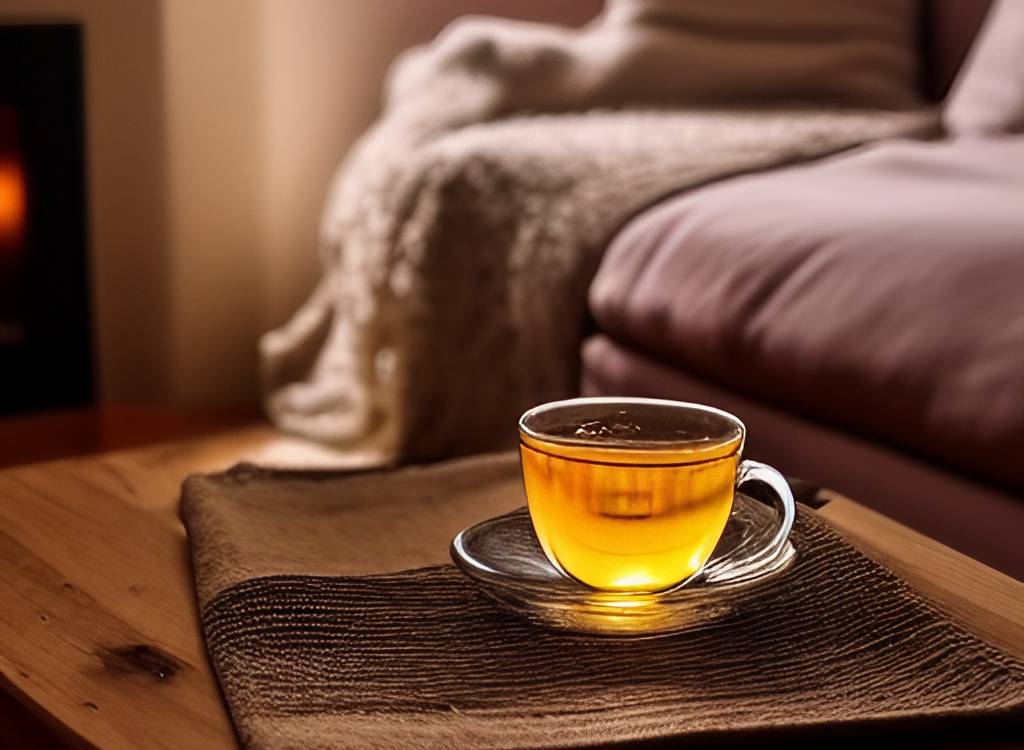
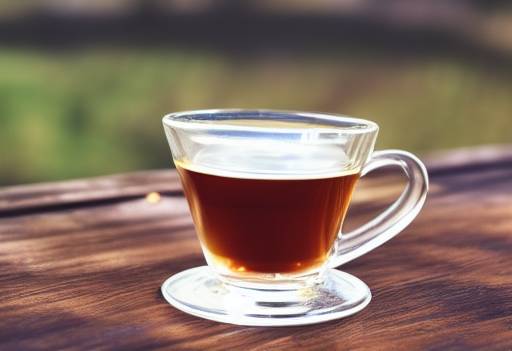 Chamomile tea is a refreshing and relaxing beverage that has many benefits. Its smooth, mellow flavor makes it ideal for zapping the stress out of your day and unwinding before bedtime. And it tastes good, too. Organic chamomile tea truly is comfort in a cup.
Chamomile tea is a refreshing and relaxing beverage that has many benefits. Its smooth, mellow flavor makes it ideal for zapping the stress out of your day and unwinding before bedtime. And it tastes good, too. Organic chamomile tea truly is comfort in a cup. 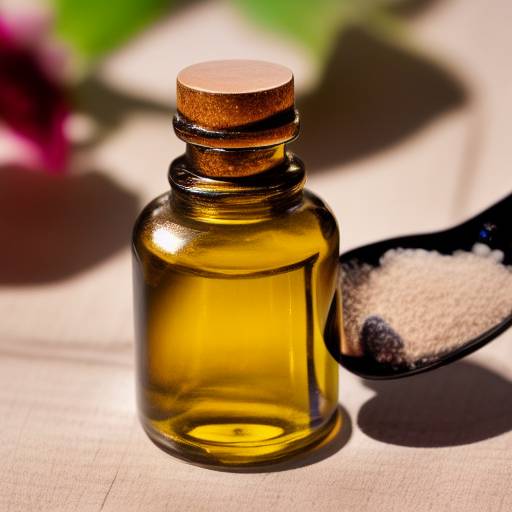
 Sinus problems are a common occurrence during the winter months. Cold weather, dry air, and allergens can all contribute to sinus congestion and inflammation. If you are looking for an over-the-counter sinus remedy that will provide relief from your symptoms, you have come to the right place! In this blog post, we will discuss some of the most effective over-the-counter sinus remedies on the market. We will also provide tips on how to choose the right one for you. So don't suffer any longer - read on for information on the best over-the-counter sinus remedies available today!
Sinus problems are a common occurrence during the winter months. Cold weather, dry air, and allergens can all contribute to sinus congestion and inflammation. If you are looking for an over-the-counter sinus remedy that will provide relief from your symptoms, you have come to the right place! In this blog post, we will discuss some of the most effective over-the-counter sinus remedies on the market. We will also provide tips on how to choose the right one for you. So don't suffer any longer - read on for information on the best over-the-counter sinus remedies available today! 








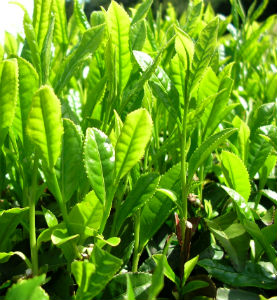 Green tea is made from the leaves of Camellia Sinensis, which is recognized for its health benefits. The nonfermented product is obtained by leaf desiccation that contains potent, polyphenolic antioxidants, with a flavanolic structure referred to as green- tea catechins, including epigallocat-echin-gallate (EGCG). Studies have shown that drinking EGCG prevents carcinogenesis in rodent organs. Studies have shown it had a significant chemoprotective effect against DMBA-induced mammary tumorigenesis in rats. Human breast cancer cell proliferation inhibition by green tea appeared mediated in part by (CKI). Mutagenesis was inhibited at concentration levels equivalent to human daily consumption.
Green tea is made from the leaves of Camellia Sinensis, which is recognized for its health benefits. The nonfermented product is obtained by leaf desiccation that contains potent, polyphenolic antioxidants, with a flavanolic structure referred to as green- tea catechins, including epigallocat-echin-gallate (EGCG). Studies have shown that drinking EGCG prevents carcinogenesis in rodent organs. Studies have shown it had a significant chemoprotective effect against DMBA-induced mammary tumorigenesis in rats. Human breast cancer cell proliferation inhibition by green tea appeared mediated in part by (CKI). Mutagenesis was inhibited at concentration levels equivalent to human daily consumption.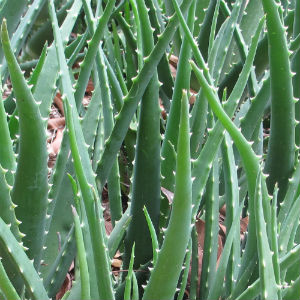 Aloe Vera is one of the natural products that is used to treat various skin diseases as well as maintaining and preventing some of the skin conditions. Aloe is rich in enzymes, minerals, vitamins and amino acids that help to heal and sooth damaged skin.
Aloe Vera is one of the natural products that is used to treat various skin diseases as well as maintaining and preventing some of the skin conditions. Aloe is rich in enzymes, minerals, vitamins and amino acids that help to heal and sooth damaged skin.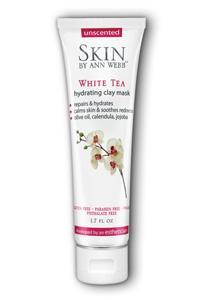 Women are known to be very particular about their facial appearances and will go to any length to ensure they look as beautiful as she can be at all times. In the quest to sustain their youthful beauty, women are known to go for the most unlikely beauty treatment just to make sure they look attractive and pretty. One of these beauty treatments women go for is the use of Clay Masks which has been found to possess several benefits for beauty enhancement. The Clay Masks is known to be quite effective for detoxification, nourishment, soothing, and cleansing of the skin. Clay masks contain very charged particles that originate from the earth. The charged particles found in clay masks possess energy which they transfer and transmit into the human body where it does the job of energy restoration and balance restoration.
Women are known to be very particular about their facial appearances and will go to any length to ensure they look as beautiful as she can be at all times. In the quest to sustain their youthful beauty, women are known to go for the most unlikely beauty treatment just to make sure they look attractive and pretty. One of these beauty treatments women go for is the use of Clay Masks which has been found to possess several benefits for beauty enhancement. The Clay Masks is known to be quite effective for detoxification, nourishment, soothing, and cleansing of the skin. Clay masks contain very charged particles that originate from the earth. The charged particles found in clay masks possess energy which they transfer and transmit into the human body where it does the job of energy restoration and balance restoration. 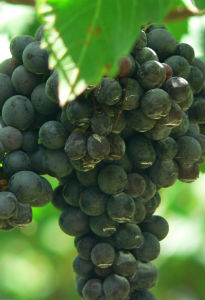 Grape seed oil has been used for centuries to prevent and cure some diseases. In modern world, grape seed oil has been used to manufacture cooking oil and health practitioners recommend it use due to its health benefits.
Grape seed oil has been used for centuries to prevent and cure some diseases. In modern world, grape seed oil has been used to manufacture cooking oil and health practitioners recommend it use due to its health benefits. Vitamin D is very important to the body. Though sun is one source of this vitamin D, it does not provide enough of vitamin D, food such as fruits and vegetables are god sources. But there are other effective artificial sources such as creams.
Vitamin D is very important to the body. Though sun is one source of this vitamin D, it does not provide enough of vitamin D, food such as fruits and vegetables are god sources. But there are other effective artificial sources such as creams.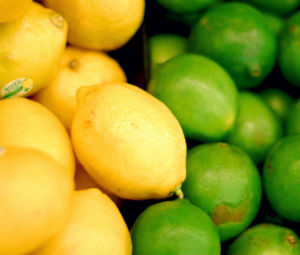 Lemon oil has many health benefits. A part from combating weight which is the popular use, it has variety of benefits, some of it benefits includes.
Lemon oil has many health benefits. A part from combating weight which is the popular use, it has variety of benefits, some of it benefits includes.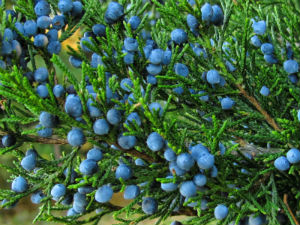 With regards to Super foods, berries are right on top of the agenda on the grounds that they are packed with gainful cell reinforcements. One such berry that can help you a great arrangement is the juniper berry oil and through the years, experimental exploration has indicated what a wonder it is.
With regards to Super foods, berries are right on top of the agenda on the grounds that they are packed with gainful cell reinforcements. One such berry that can help you a great arrangement is the juniper berry oil and through the years, experimental exploration has indicated what a wonder it is. 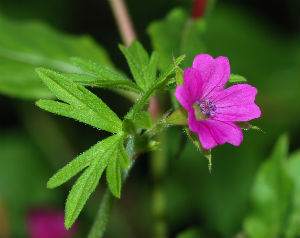 Germanium oil is known to be very beneficial to the body and has been used to treat and prevent various diseases. It is a major material in cosmetics industries due to it soothing ability.
Germanium oil is known to be very beneficial to the body and has been used to treat and prevent various diseases. It is a major material in cosmetics industries due to it soothing ability.  Cloves plant come from the maluku Islands in Indonesia, they grow as flower buds. The flower buds are used mostly as spice. When cloves turn red, they are ready for collection. They are harvested primarily in Indonesia, Sri Lanka, India, Madagascar, Zanzibar, and Pakistan.
Cloves plant come from the maluku Islands in Indonesia, they grow as flower buds. The flower buds are used mostly as spice. When cloves turn red, they are ready for collection. They are harvested primarily in Indonesia, Sri Lanka, India, Madagascar, Zanzibar, and Pakistan.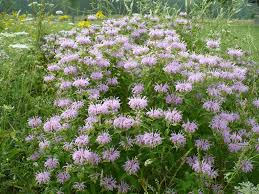 Bergamot citrus or the bergamot orange is the fruit from which bergamot oil is derived. Taken from the peel of the fruit, the oil is pressed out of the rind through cold compression. The citrus originally came from tropical Asia but is now grown in Europe, mainly the southern part of Italy, but also in Morocco and the Ivory Coast. It takes name from an Italian city in Lombardy called Bergamot.
Bergamot citrus or the bergamot orange is the fruit from which bergamot oil is derived. Taken from the peel of the fruit, the oil is pressed out of the rind through cold compression. The citrus originally came from tropical Asia but is now grown in Europe, mainly the southern part of Italy, but also in Morocco and the Ivory Coast. It takes name from an Italian city in Lombardy called Bergamot.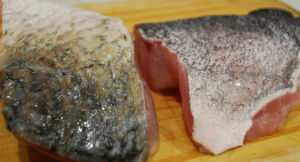 Curious why they have become a huge talk of the nation, and such an important part of our diets all of a sudden? Some omega oils are essential for the growth of human tissue and proper body function, but our body don't produce enough of them on its own.
Curious why they have become a huge talk of the nation, and such an important part of our diets all of a sudden? Some omega oils are essential for the growth of human tissue and proper body function, but our body don't produce enough of them on its own. 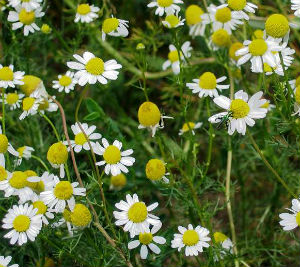 Chamomile is a short low growing herb with small fine-leaves and daisy like flowers. The herb's flowers have a small-yellow center which is surrounded by thin white-petals. The Chamomile leaves have a sweet-apple smell, The herb thrives in warm-humid conditions and it has a tendency to becoming invasive if its left to just grow freely.
Chamomile is a short low growing herb with small fine-leaves and daisy like flowers. The herb's flowers have a small-yellow center which is surrounded by thin white-petals. The Chamomile leaves have a sweet-apple smell, The herb thrives in warm-humid conditions and it has a tendency to becoming invasive if its left to just grow freely.
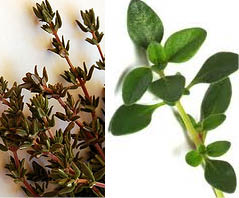
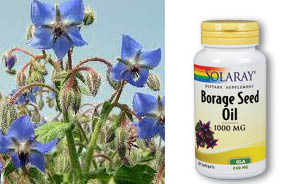
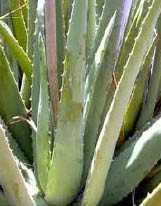 It is well known by those that use it as such that Aloe Vera is a powerful anti-inflammatory that fights inflammation both internally and externally. If you suffer from arthritis, it can be used to reduce the swelling and the pain caused by the inflammatory response of your immune system to the aggravation caused by wearing joints and infected synovial fluid.
It is well known by those that use it as such that Aloe Vera is a powerful anti-inflammatory that fights inflammation both internally and externally. If you suffer from arthritis, it can be used to reduce the swelling and the pain caused by the inflammatory response of your immune system to the aggravation caused by wearing joints and infected synovial fluid. 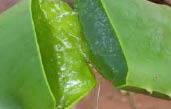 your own joints, and Aloe Vera goes a long way towards mediating this and reducing its effects. It is by no means a cure, but offers relief from pain and swelling while also supporting your immune system. It also displays its anti-inflammatory properties in soothing the effects of acne, eczema and other inflammatory skin conditions such as sunburn.
your own joints, and Aloe Vera goes a long way towards mediating this and reducing its effects. It is by no means a cure, but offers relief from pain and swelling while also supporting your immune system. It also displays its anti-inflammatory properties in soothing the effects of acne, eczema and other inflammatory skin conditions such as sunburn. 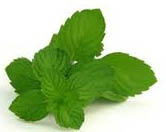 The spearmint is a species of mint that is native to a lot of Europe and southwest Asia. However, its exact natural range is uncertain because of extensive early cultivation. The herb can be found growing in wet soils. It is also an invasive species in the Great Lakes region. There, it was first sighted in 1843. The spearmint plant is an herbaceous rhizomatous perennial plant. It can be found growing thirty to one hundred centimeters tall. The leaves are five to nine centimeters long and have a serrated margin. The plant produces pink or white flowers that are slender spikes. The name ‘spear’mint comes from the pointed leaf tips.
The spearmint is a species of mint that is native to a lot of Europe and southwest Asia. However, its exact natural range is uncertain because of extensive early cultivation. The herb can be found growing in wet soils. It is also an invasive species in the Great Lakes region. There, it was first sighted in 1843. The spearmint plant is an herbaceous rhizomatous perennial plant. It can be found growing thirty to one hundred centimeters tall. The leaves are five to nine centimeters long and have a serrated margin. The plant produces pink or white flowers that are slender spikes. The name ‘spear’mint comes from the pointed leaf tips. 
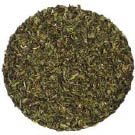
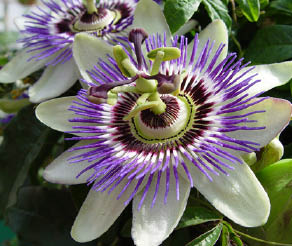 The passion flower comes from a genus of about five hundred species of flowering plants. These herbs are mostly vines, although some are shrubs. A few of these plants are herbaceous.
The passion flower comes from a genus of about five hundred species of flowering plants. These herbs are mostly vines, although some are shrubs. A few of these plants are herbaceous. 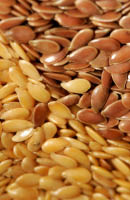 Since the beginning of civilization, flax has been around. The early Swiss used the fibers for weaving, while Egyptians decorated their tombs with carvings of the flax plant and wrapped mummies in linen due to the high esteem they had for this plant. The fibers of the flax plant were a main source of clothing in biblical times, with even Christ being believed to have been buried in linen. The use of
Since the beginning of civilization, flax has been around. The early Swiss used the fibers for weaving, while Egyptians decorated their tombs with carvings of the flax plant and wrapped mummies in linen due to the high esteem they had for this plant. The fibers of the flax plant were a main source of clothing in biblical times, with even Christ being believed to have been buried in linen. The use of 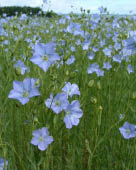 This herb also contains lignans, which are a type of fiber that has anti-estrogenic activity. A study done at the National Cancer Institute followed vegetarian women. The study indicated a correlation between a high amount of lignans in the blood and a lower risk for breast cancer. It has also been discovered that people living in countries where flaxseed is consumed in high amounts have a lower risk for developing both breast and colon cancer. It should be noted that stabilized flaxseed has a higher content of lignans than any other food.
This herb also contains lignans, which are a type of fiber that has anti-estrogenic activity. A study done at the National Cancer Institute followed vegetarian women. The study indicated a correlation between a high amount of lignans in the blood and a lower risk for breast cancer. It has also been discovered that people living in countries where flaxseed is consumed in high amounts have a lower risk for developing both breast and colon cancer. It should be noted that stabilized flaxseed has a higher content of lignans than any other food. 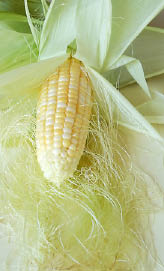 Cornsilk is an herbal remedy that is made from stigmas, which are the yellowish thread-like strands, found inside the husks of corn. Stigmas are found on the female flower of corn and are a member of the grass family. This part of the corn plant measurers four to eight inches long and is collected for medicinal use before the plant is pollinated.
Cornsilk is an herbal remedy that is made from stigmas, which are the yellowish thread-like strands, found inside the husks of corn. Stigmas are found on the female flower of corn and are a member of the grass family. This part of the corn plant measurers four to eight inches long and is collected for medicinal use before the plant is pollinated. 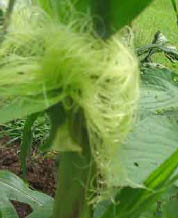
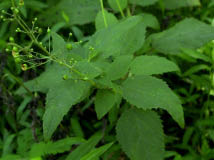 Figwort is the common name for some members of the Scrophulariaceae family, which is comprised mainly of herbs and small shrubs. These plants are distributed widely over all continents, with the family including few types of climbing plants and some parasitic and saprophytic forms.
Figwort is the common name for some members of the Scrophulariaceae family, which is comprised mainly of herbs and small shrubs. These plants are distributed widely over all continents, with the family including few types of climbing plants and some parasitic and saprophytic forms. 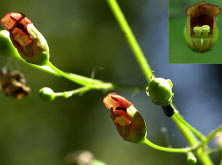 The figwort family is characterized by irregular, bilaterally symmetrical flowers with four to five petal, joined to a calax and four to five petals, joined to a corolla. This forms a tube, with the petals flaring outward at the end. The lower ones form a down turned lip. The flowers are bisexual and are sometimes brightly colored. The leaves of the plant are alternate, opposite, and sometimes whorled. The fruit is typically a two-chambered capsule. Some common hemiparasites can be found in the figwort family. Among these are Indian paintbrush, owl’s clover, lousewort, and bird’s beak. These hemiparasites have green, photosynthetic leaves. A substantial portion of the parasite’s carbon comes from the host plant, which is parasitized from the roots.
The figwort family is characterized by irregular, bilaterally symmetrical flowers with four to five petal, joined to a calax and four to five petals, joined to a corolla. This forms a tube, with the petals flaring outward at the end. The lower ones form a down turned lip. The flowers are bisexual and are sometimes brightly colored. The leaves of the plant are alternate, opposite, and sometimes whorled. The fruit is typically a two-chambered capsule. Some common hemiparasites can be found in the figwort family. Among these are Indian paintbrush, owl’s clover, lousewort, and bird’s beak. These hemiparasites have green, photosynthetic leaves. A substantial portion of the parasite’s carbon comes from the host plant, which is parasitized from the roots. 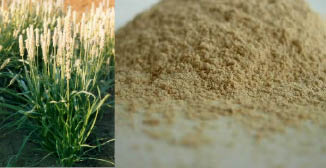 The Native Americans used psyllium as an eye-wash. It was also used to treat sprains and abrasions. Additionally, it was and continues to be used as a laxative to help relieve constipation. This herb contains aucubine, enzymes, fats, glycosides, mucilage, and protein.
The Native Americans used psyllium as an eye-wash. It was also used to treat sprains and abrasions. Additionally, it was and continues to be used as a laxative to help relieve constipation. This herb contains aucubine, enzymes, fats, glycosides, mucilage, and protein. 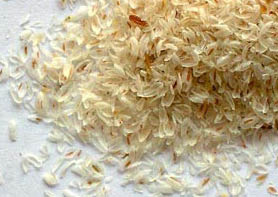
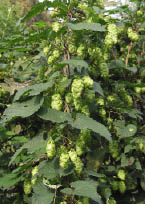 Hops are the female flower cones, which are also known as strobiles, of the hop plant. The hop plant is part of the Cannabaceae family, which also includes hemp. Primarily, hops are used as a flavoring and stability agent in beer. The first documented use in beer is from the eleventh century. Today, hops are used extensively in brewing because of their many benefits. Among these are balancing the sweetness of the hops with bitterness. However, hops are also used for various purposes in other beverages and herbal medicine.
Hops are the female flower cones, which are also known as strobiles, of the hop plant. The hop plant is part of the Cannabaceae family, which also includes hemp. Primarily, hops are used as a flavoring and stability agent in beer. The first documented use in beer is from the eleventh century. Today, hops are used extensively in brewing because of their many benefits. Among these are balancing the sweetness of the hops with bitterness. However, hops are also used for various purposes in other beverages and herbal medicine. 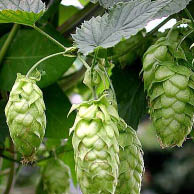 Many studies indicate that hops have sedative properties. This herb is known to be fast-acting, soothing, and calming to the nervous system. Hops are often nervine herbs that aid in promoting sleep. Certain elements of the plant have been shown to possess hypnotic effects. Hops are also used for their antispasmodic effects. Additionally, hops contain antibacterial properties, which validates some of their historical uses.
Many studies indicate that hops have sedative properties. This herb is known to be fast-acting, soothing, and calming to the nervous system. Hops are often nervine herbs that aid in promoting sleep. Certain elements of the plant have been shown to possess hypnotic effects. Hops are also used for their antispasmodic effects. Additionally, hops contain antibacterial properties, which validates some of their historical uses. 



